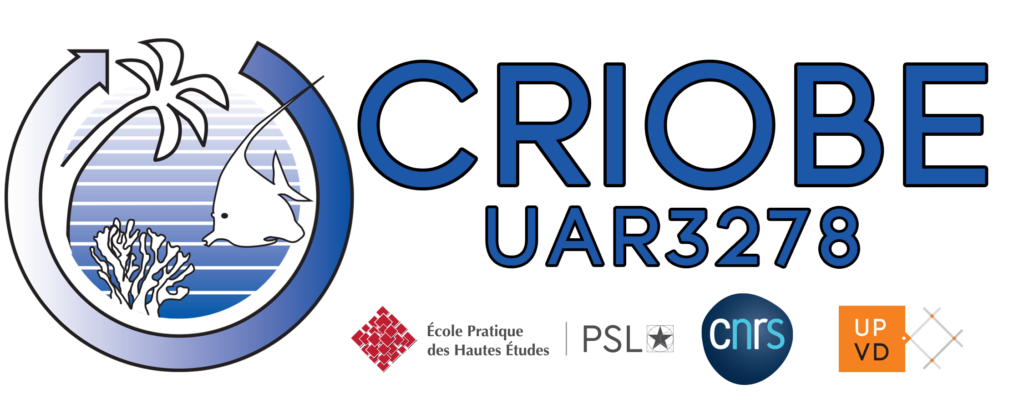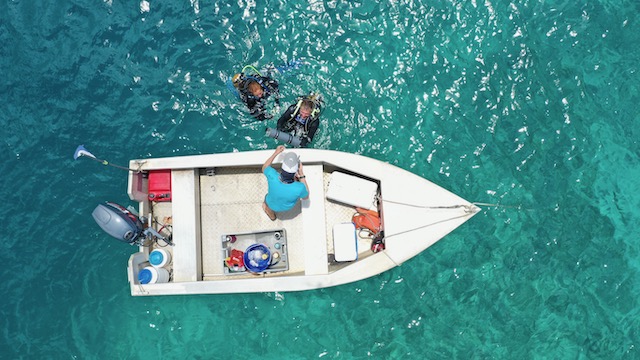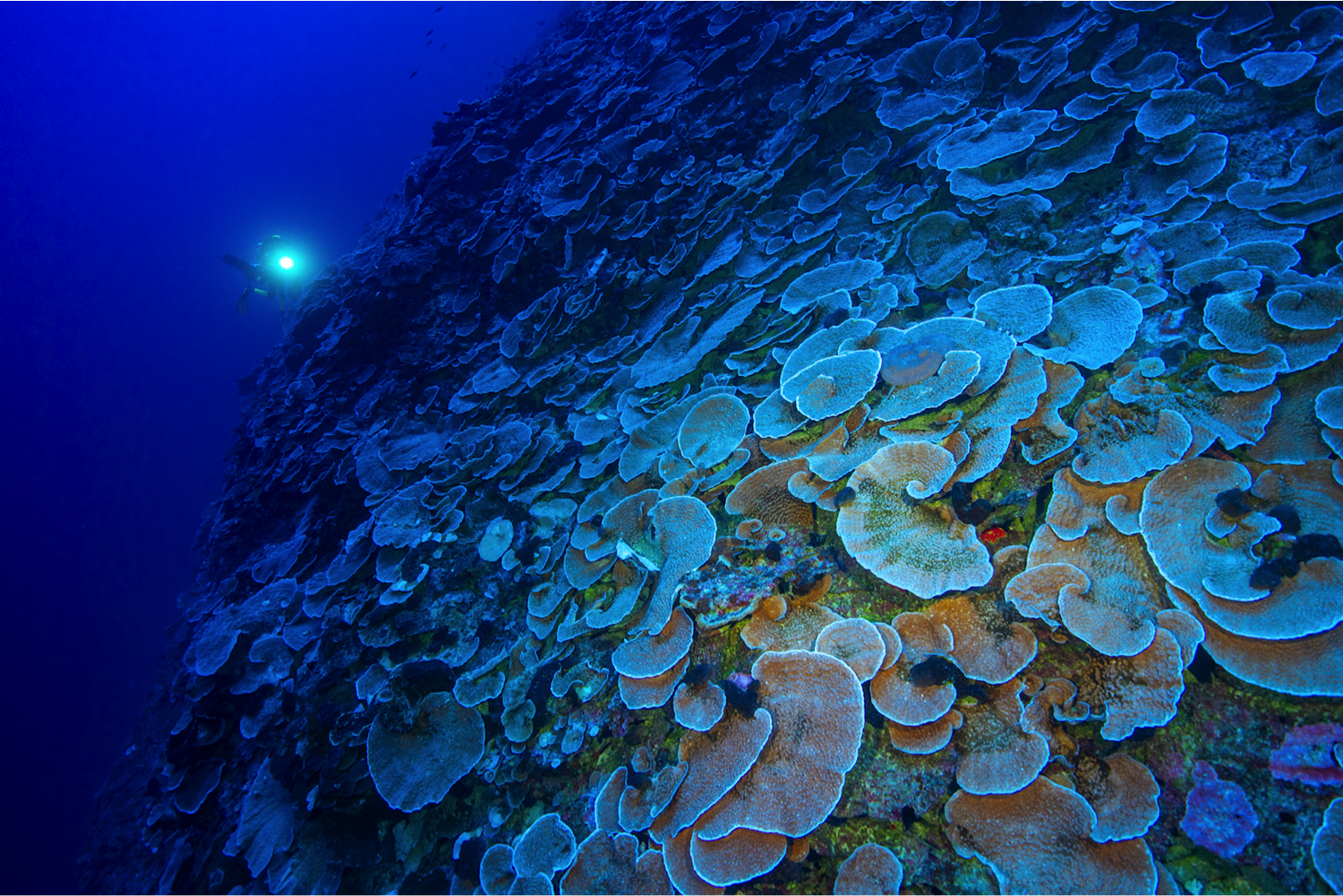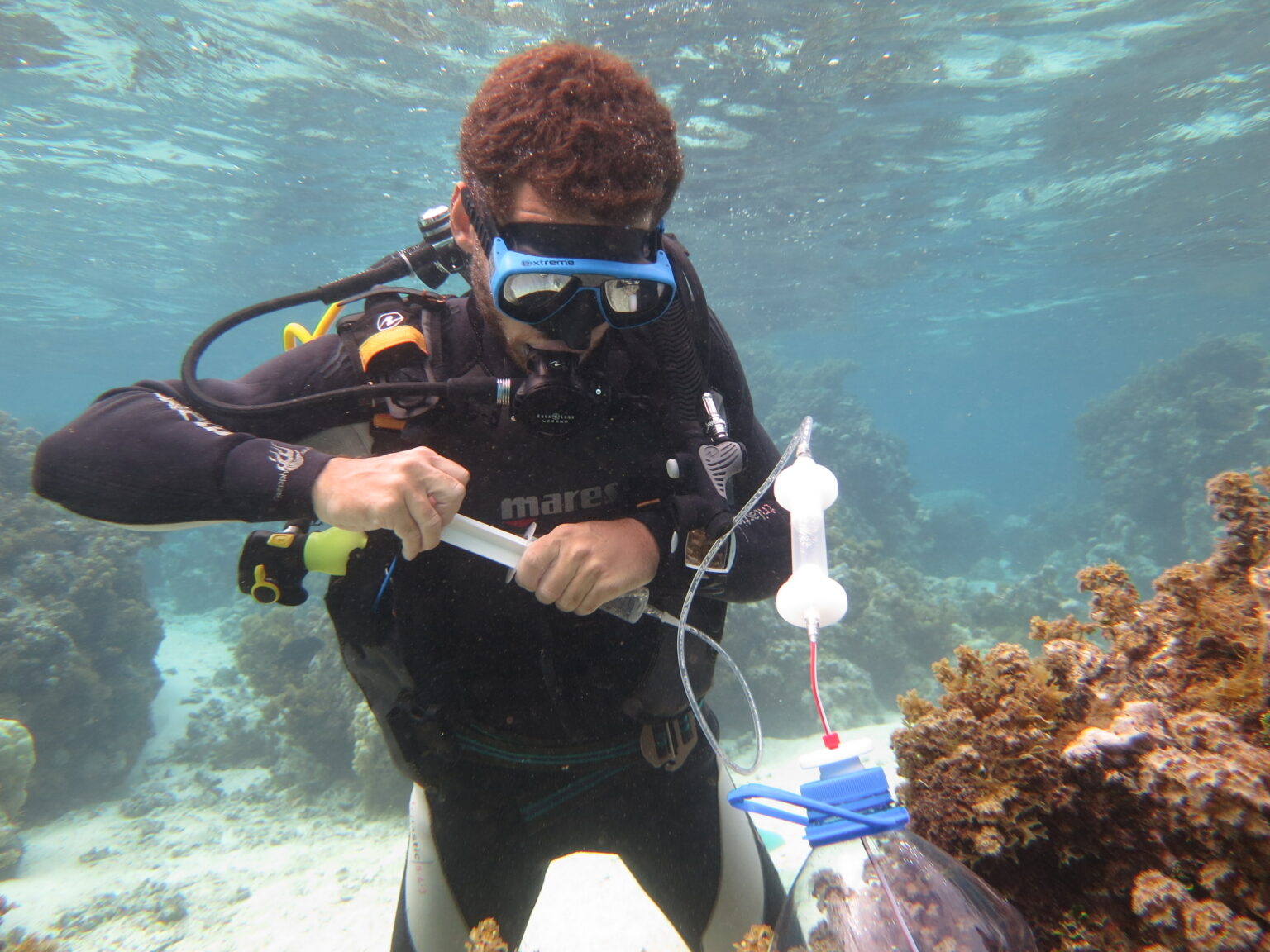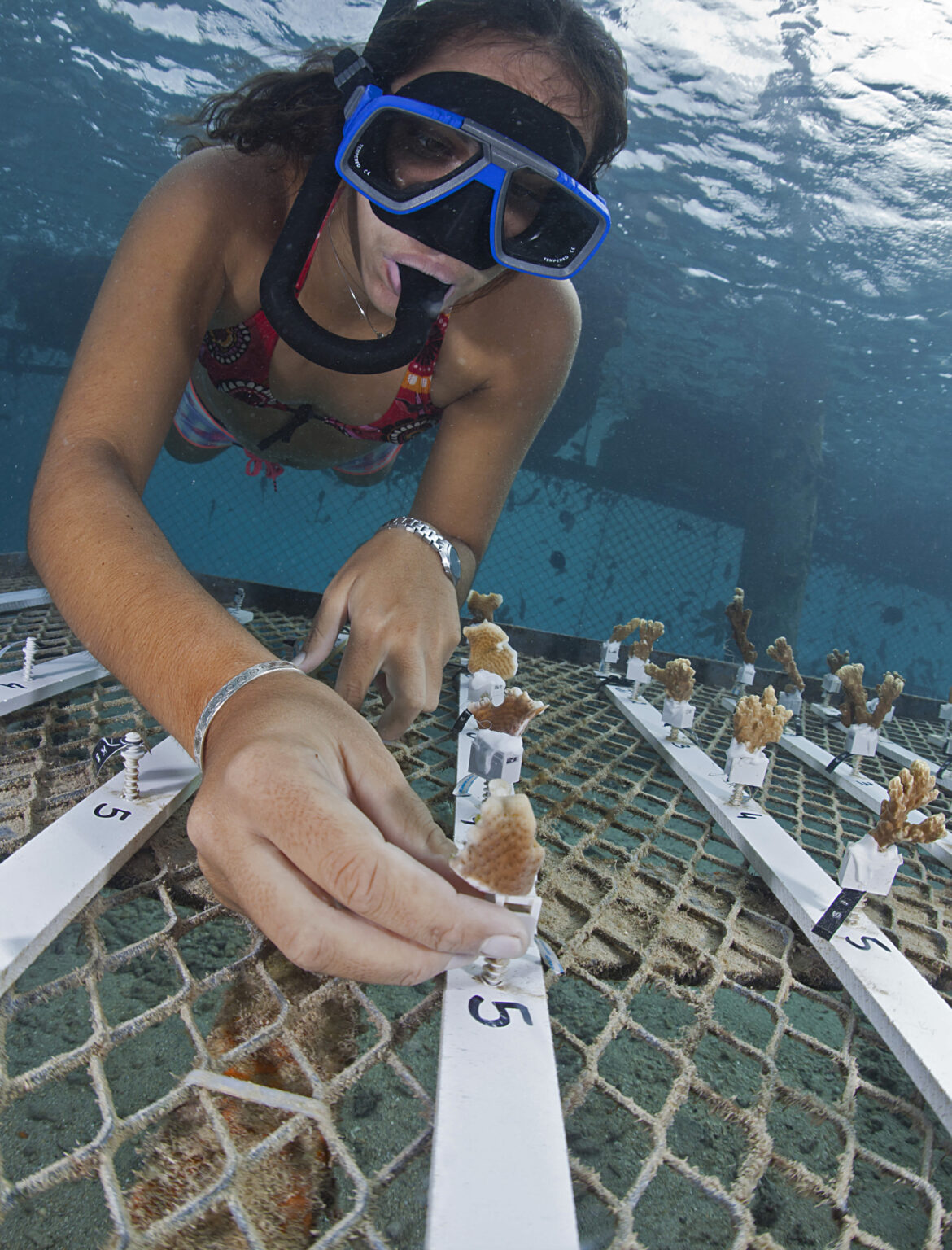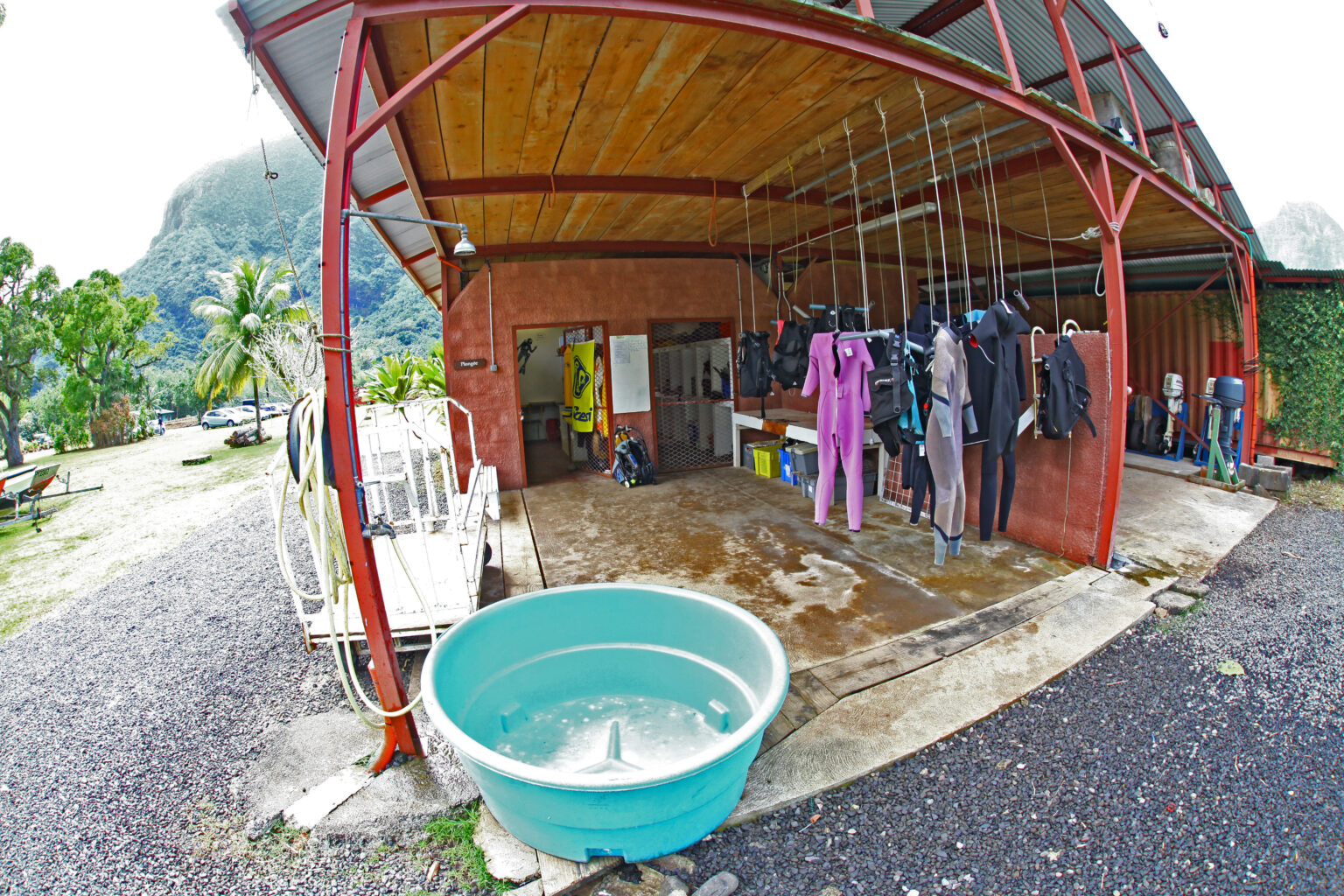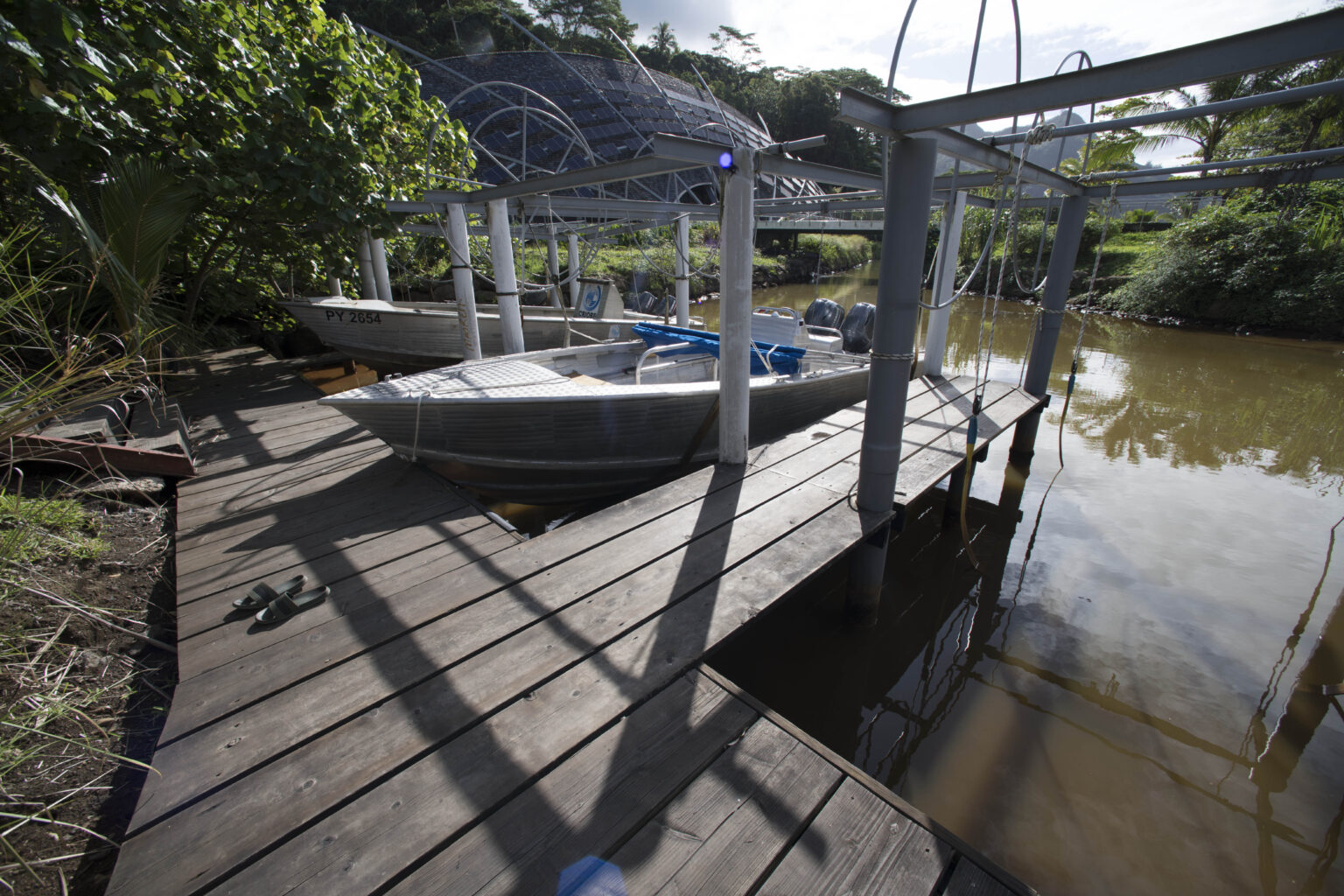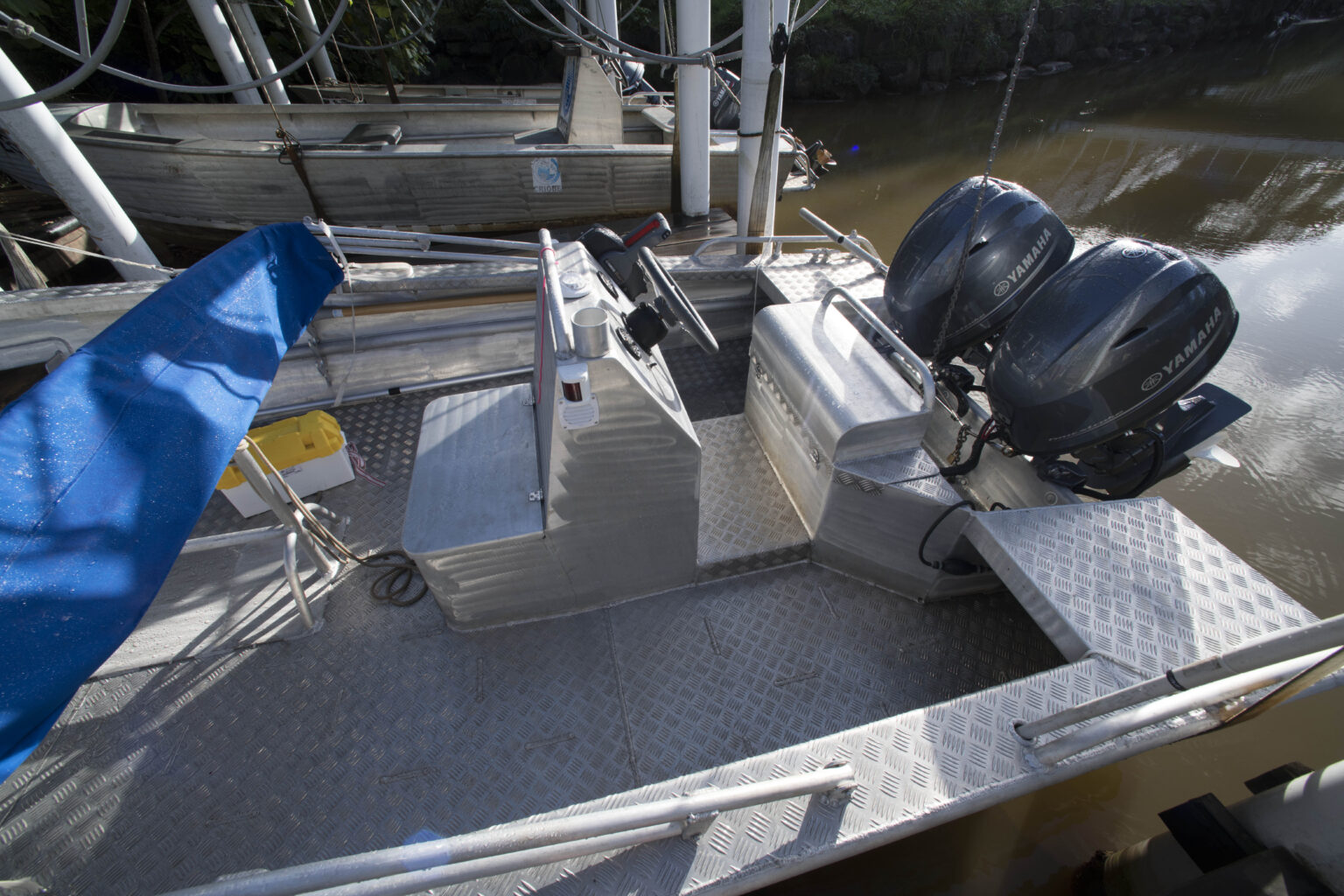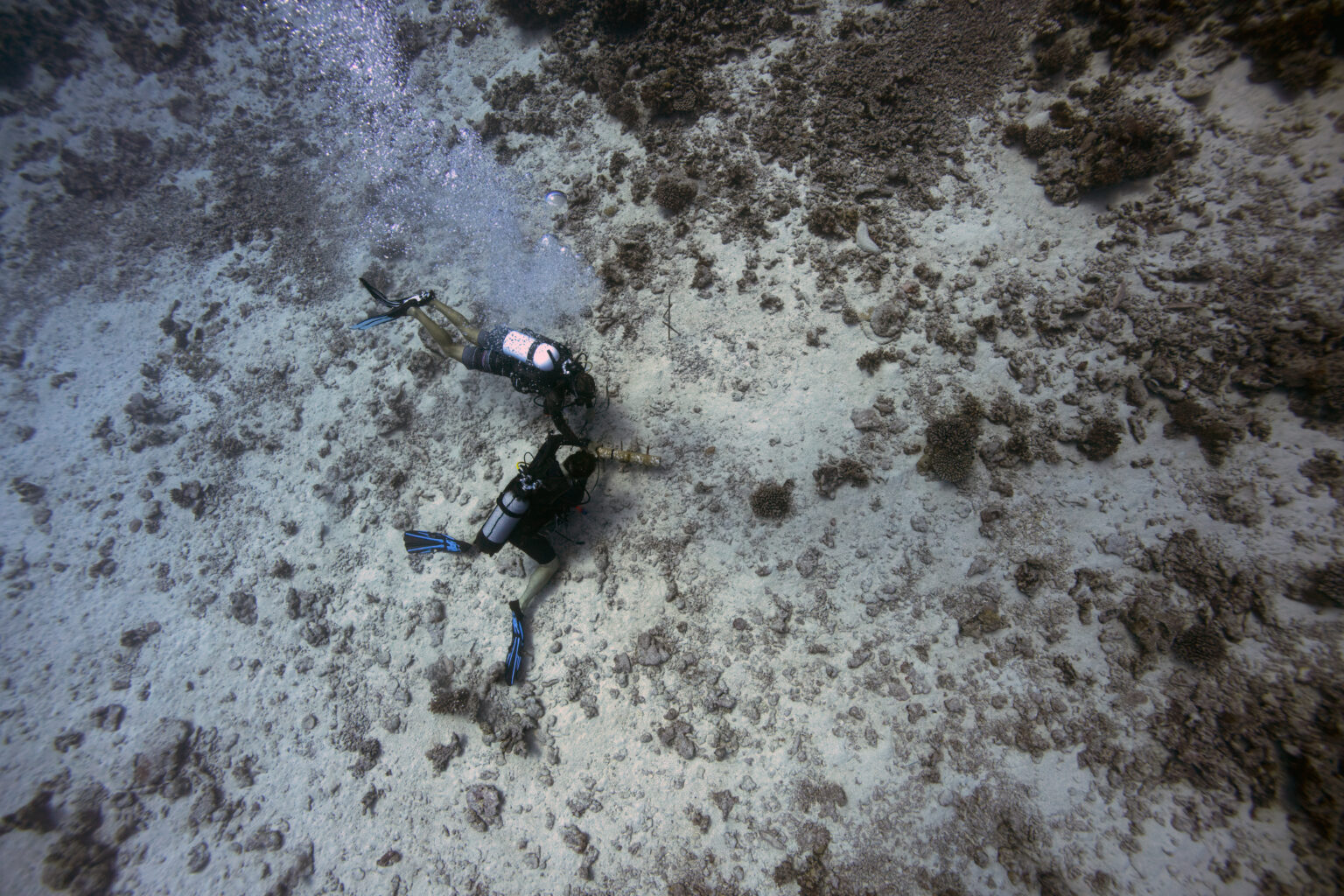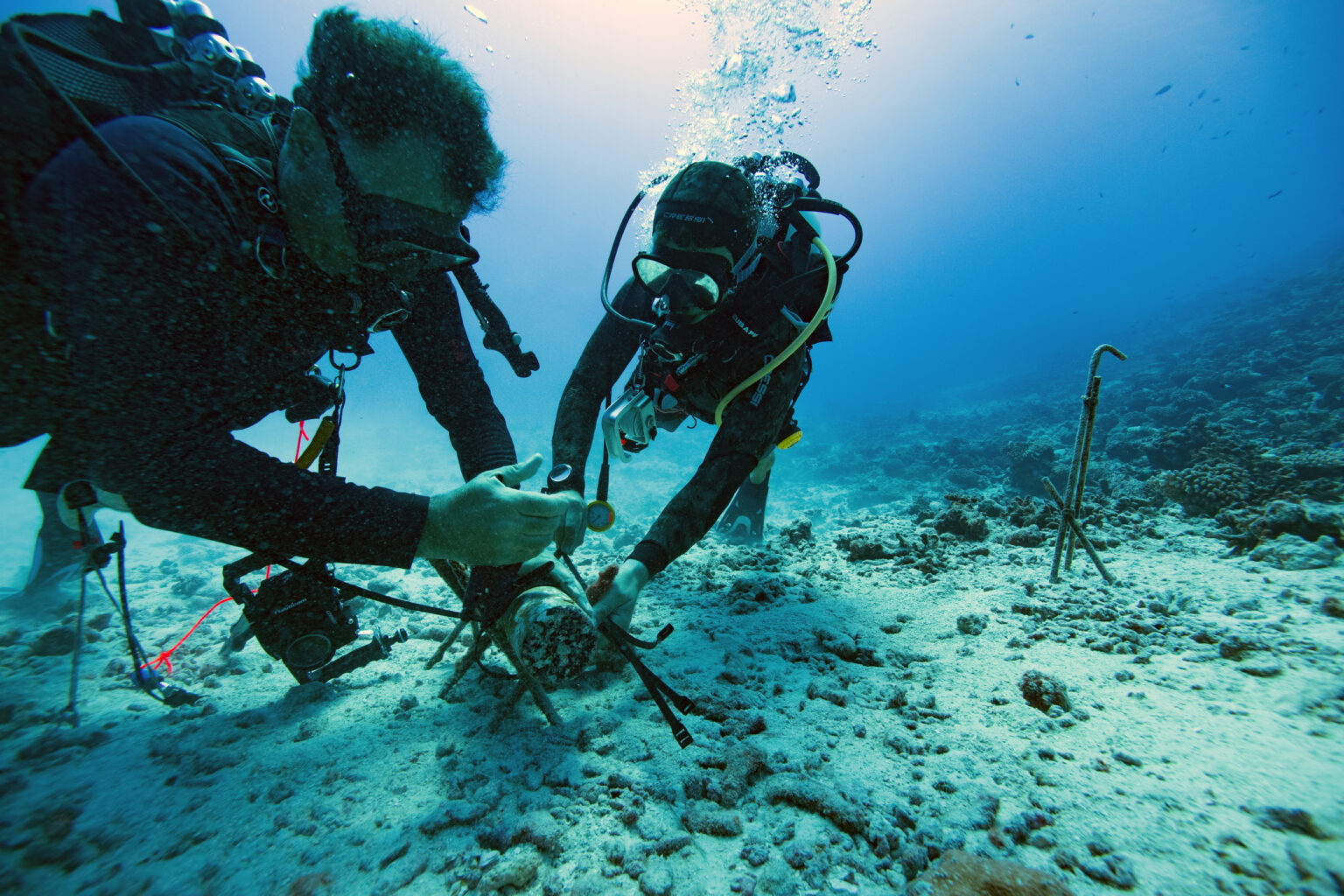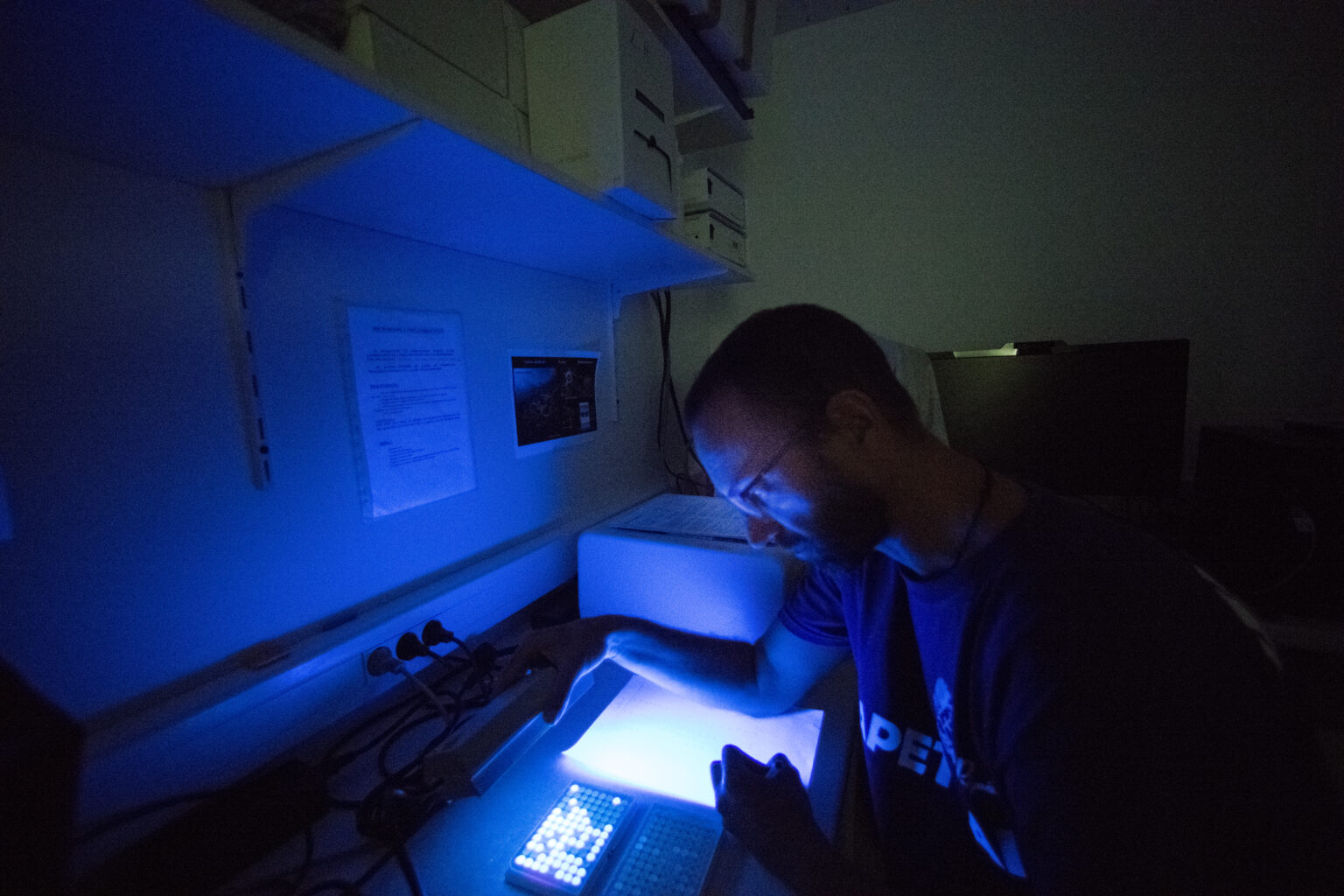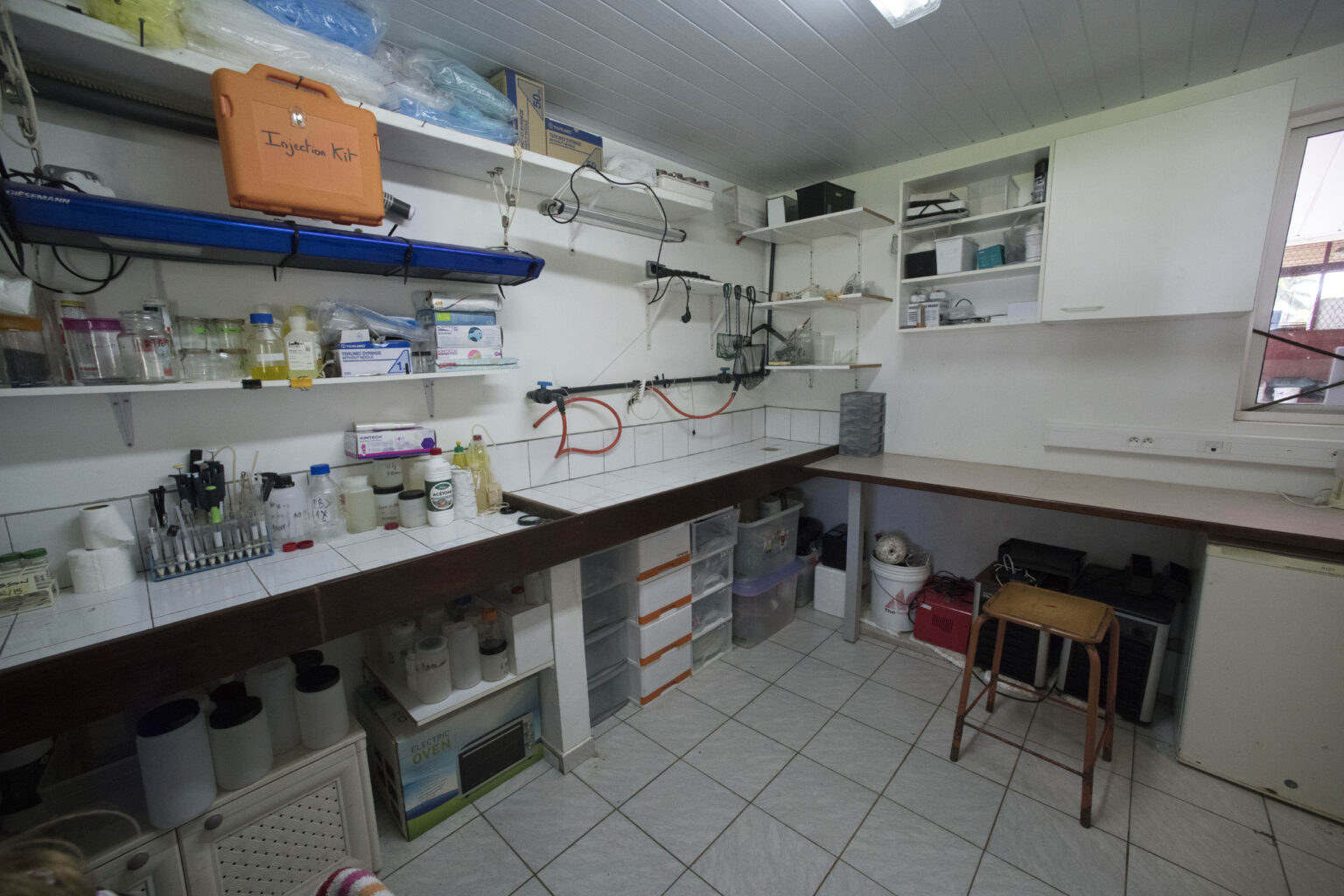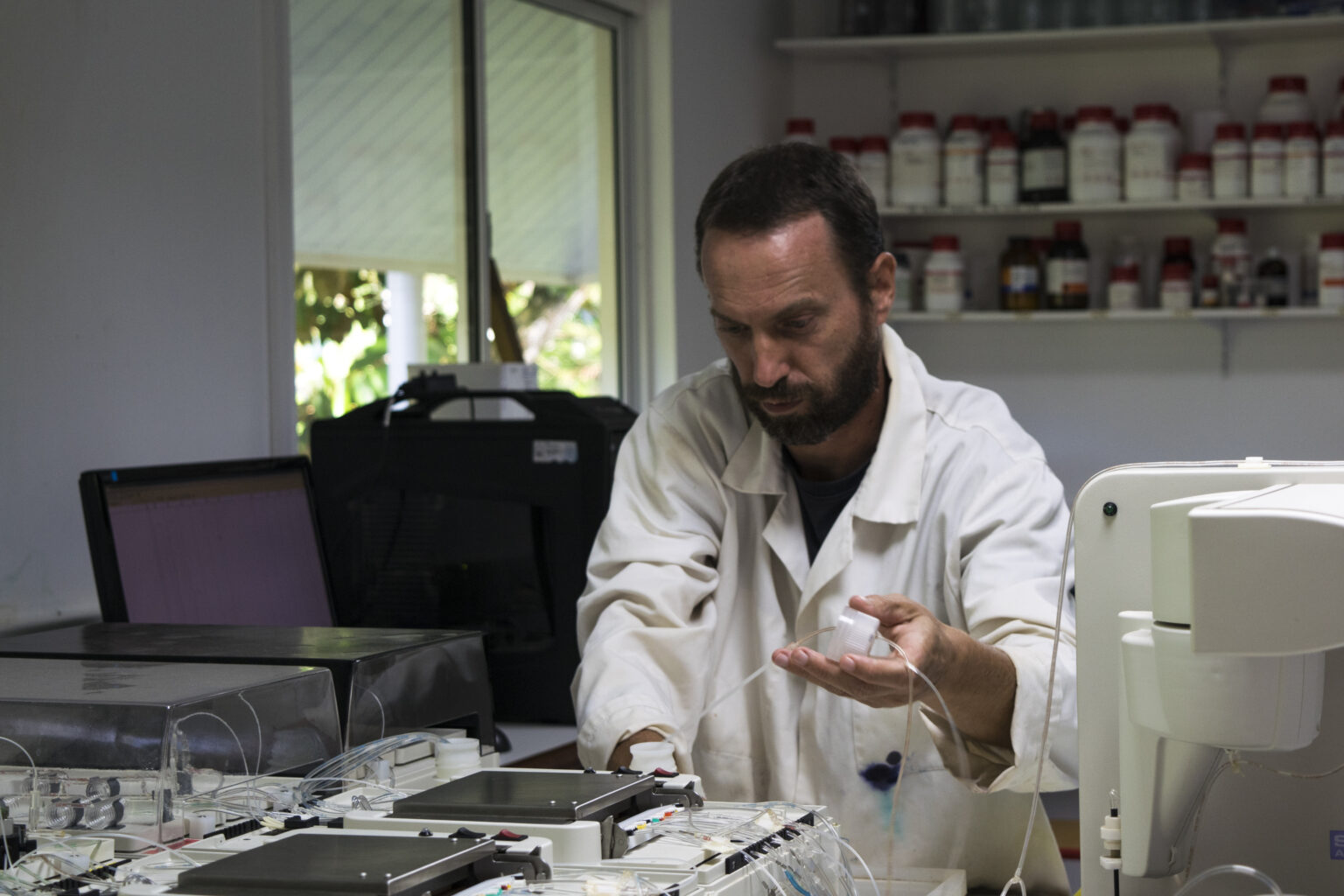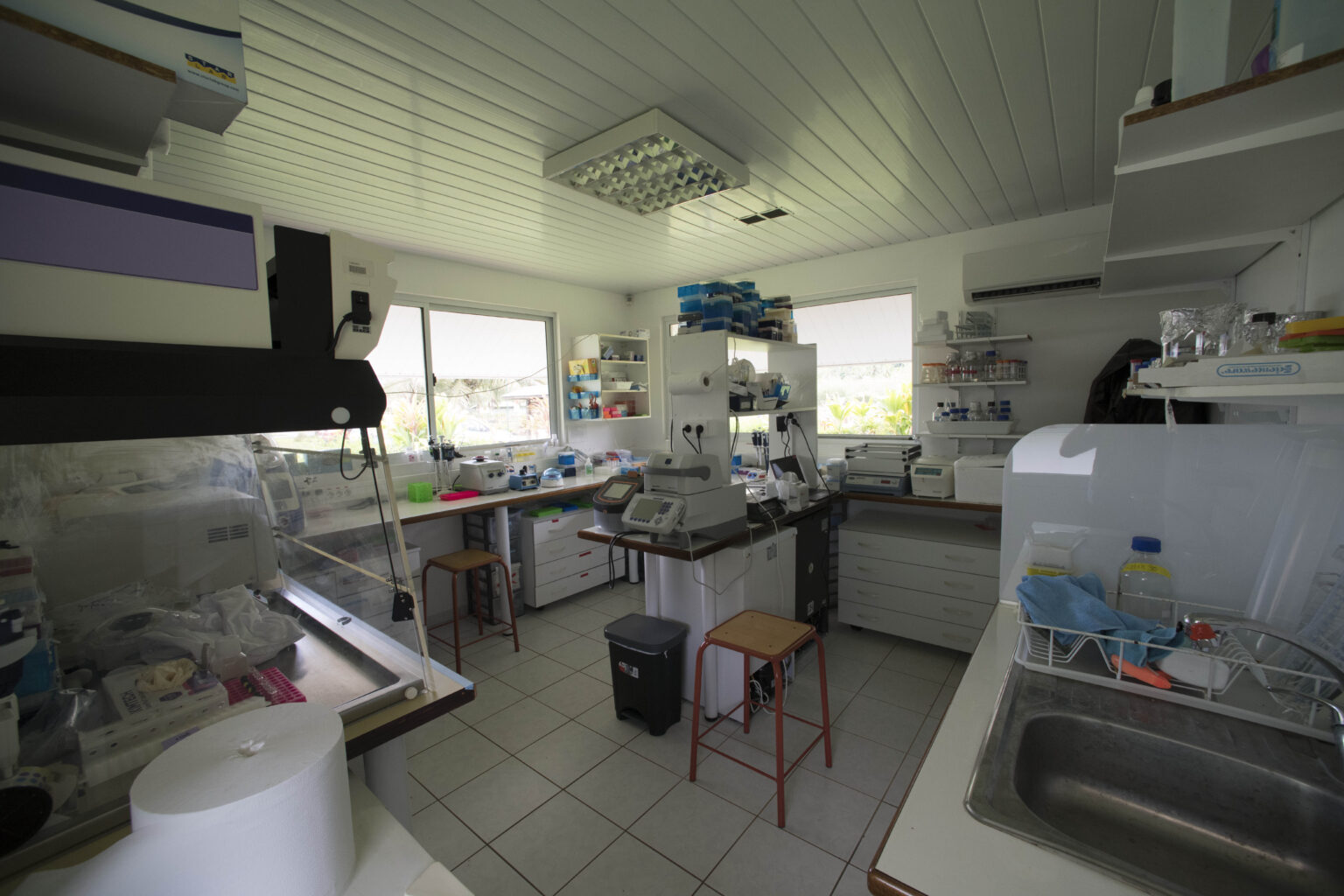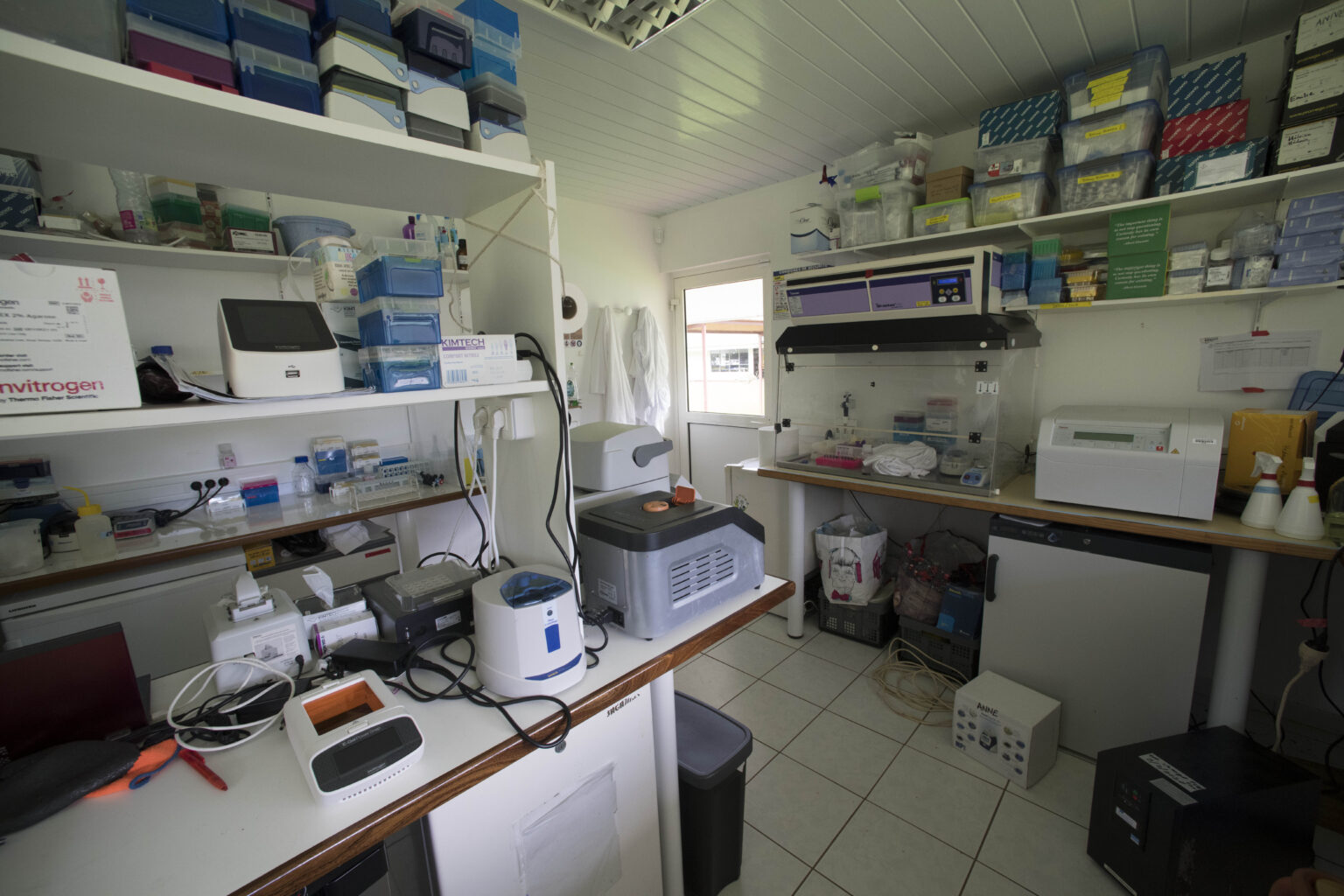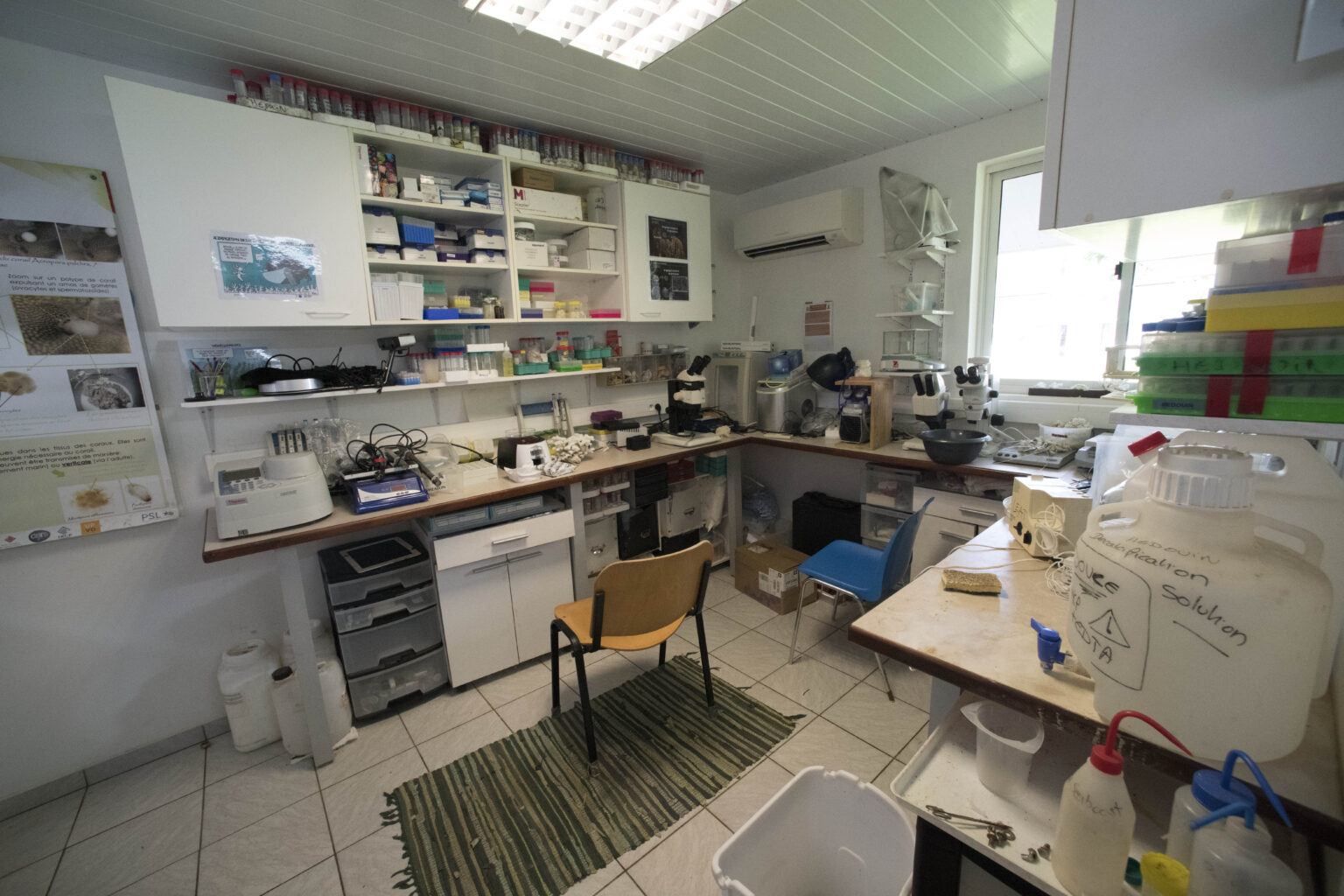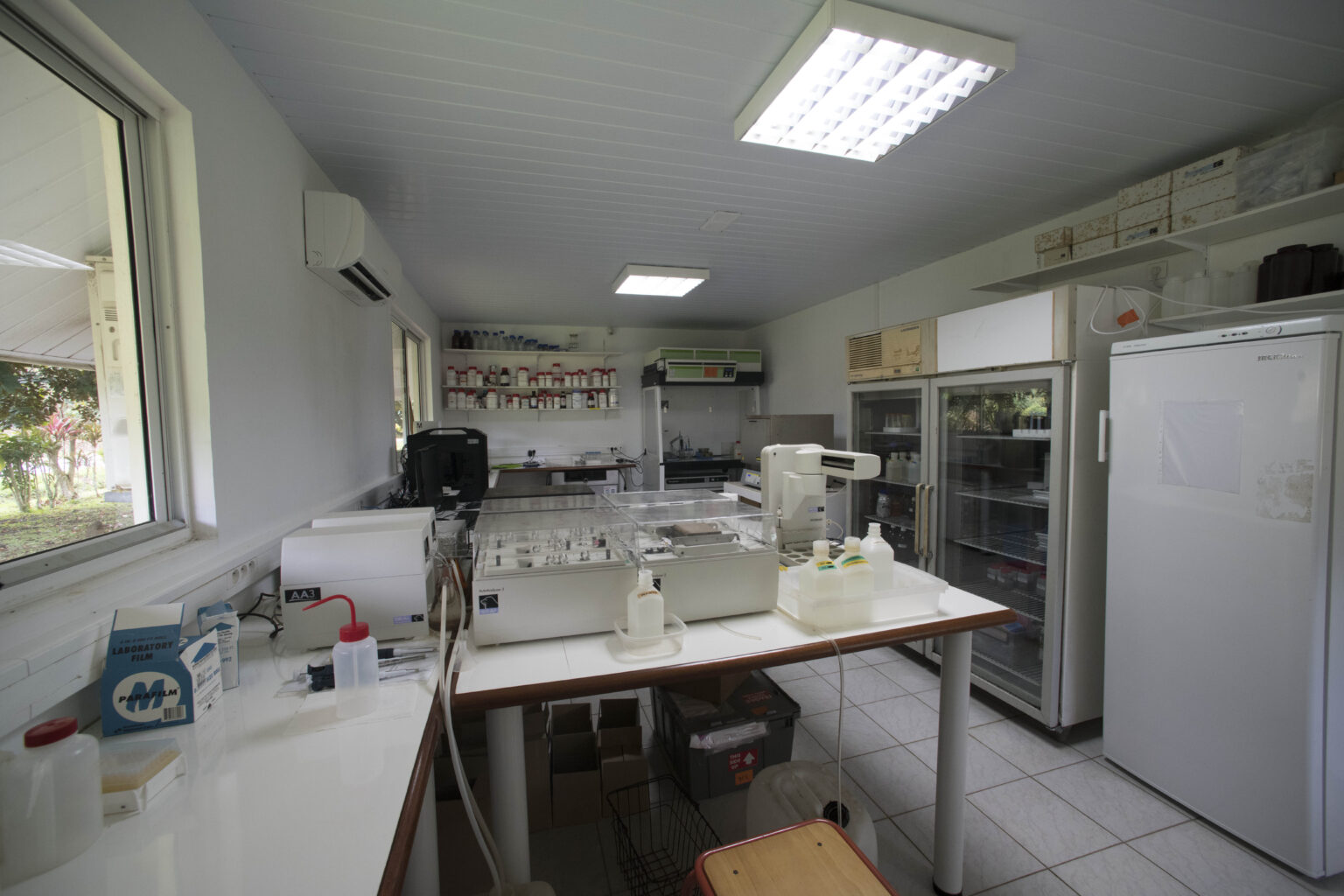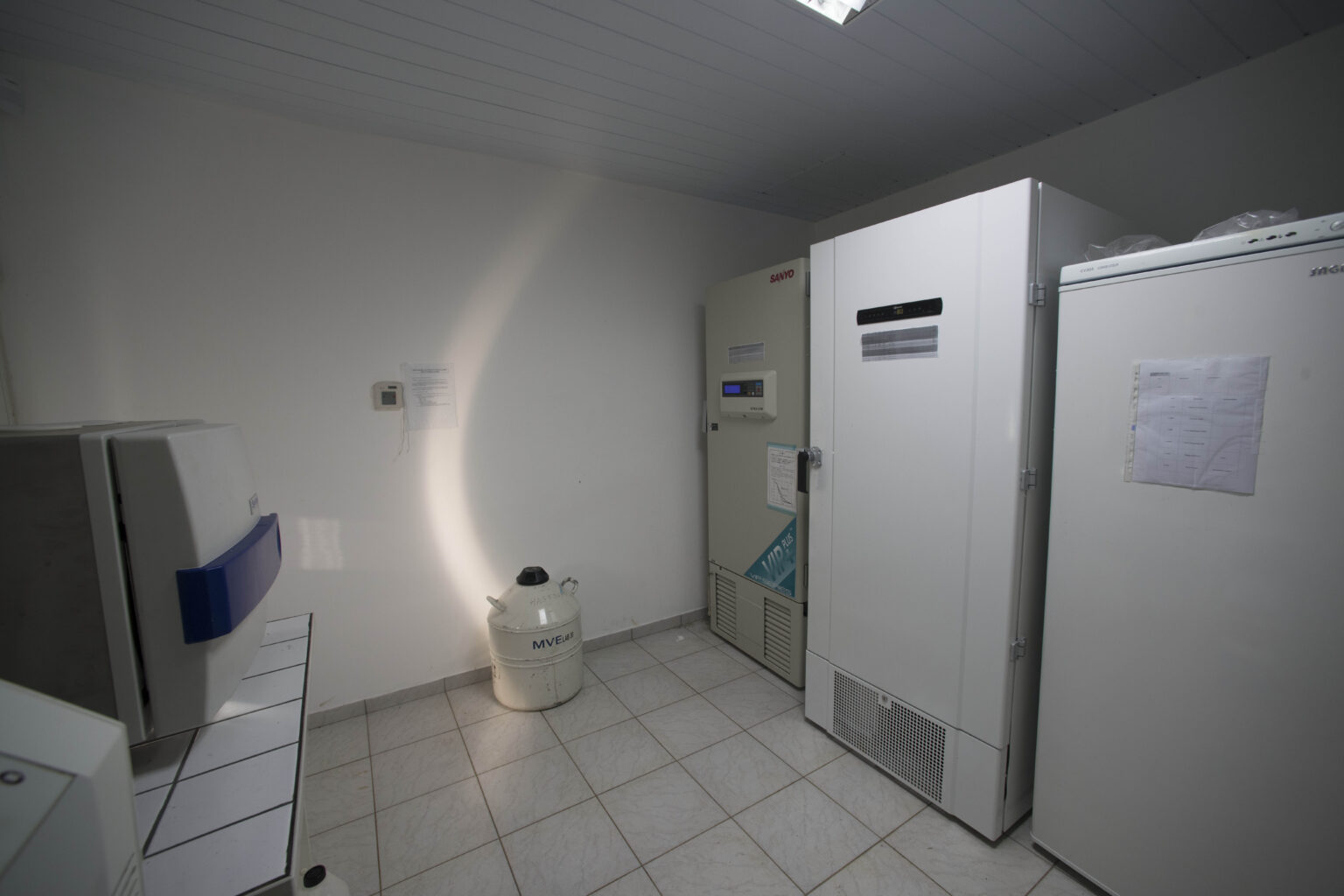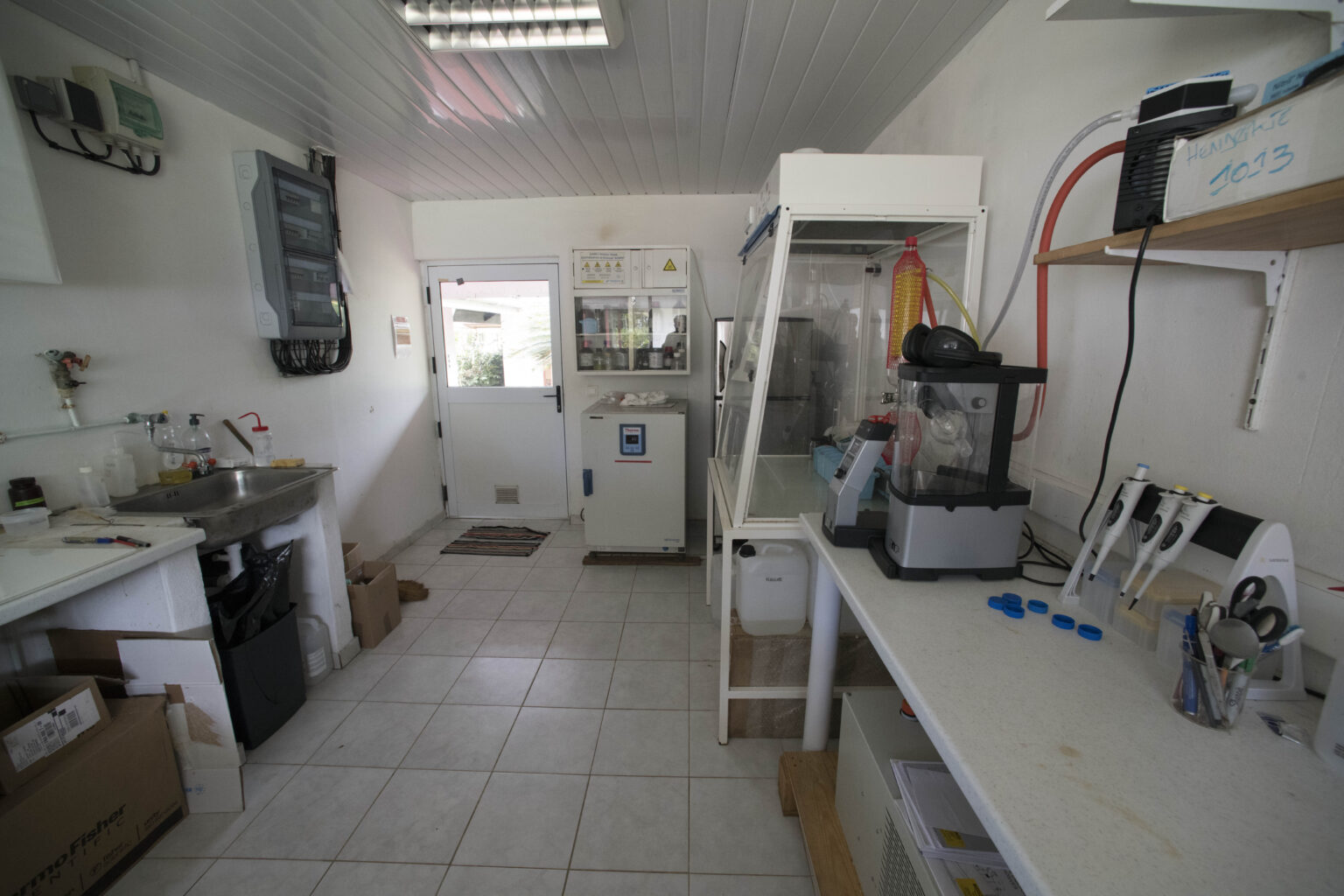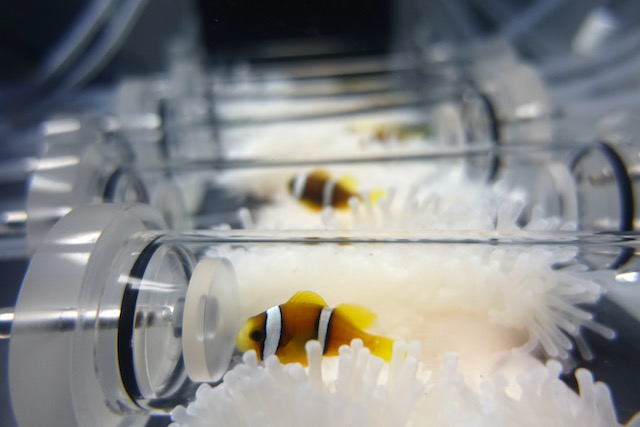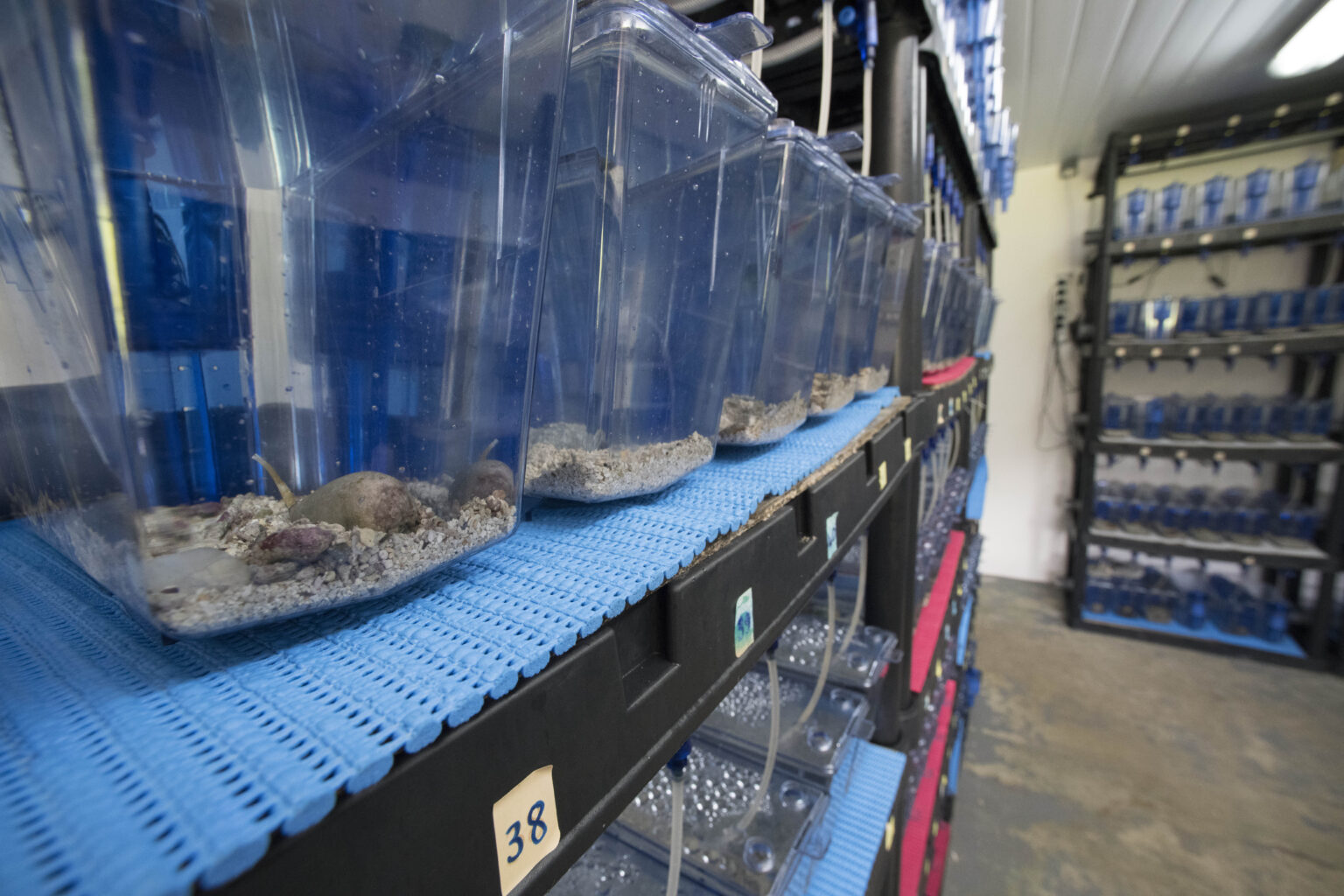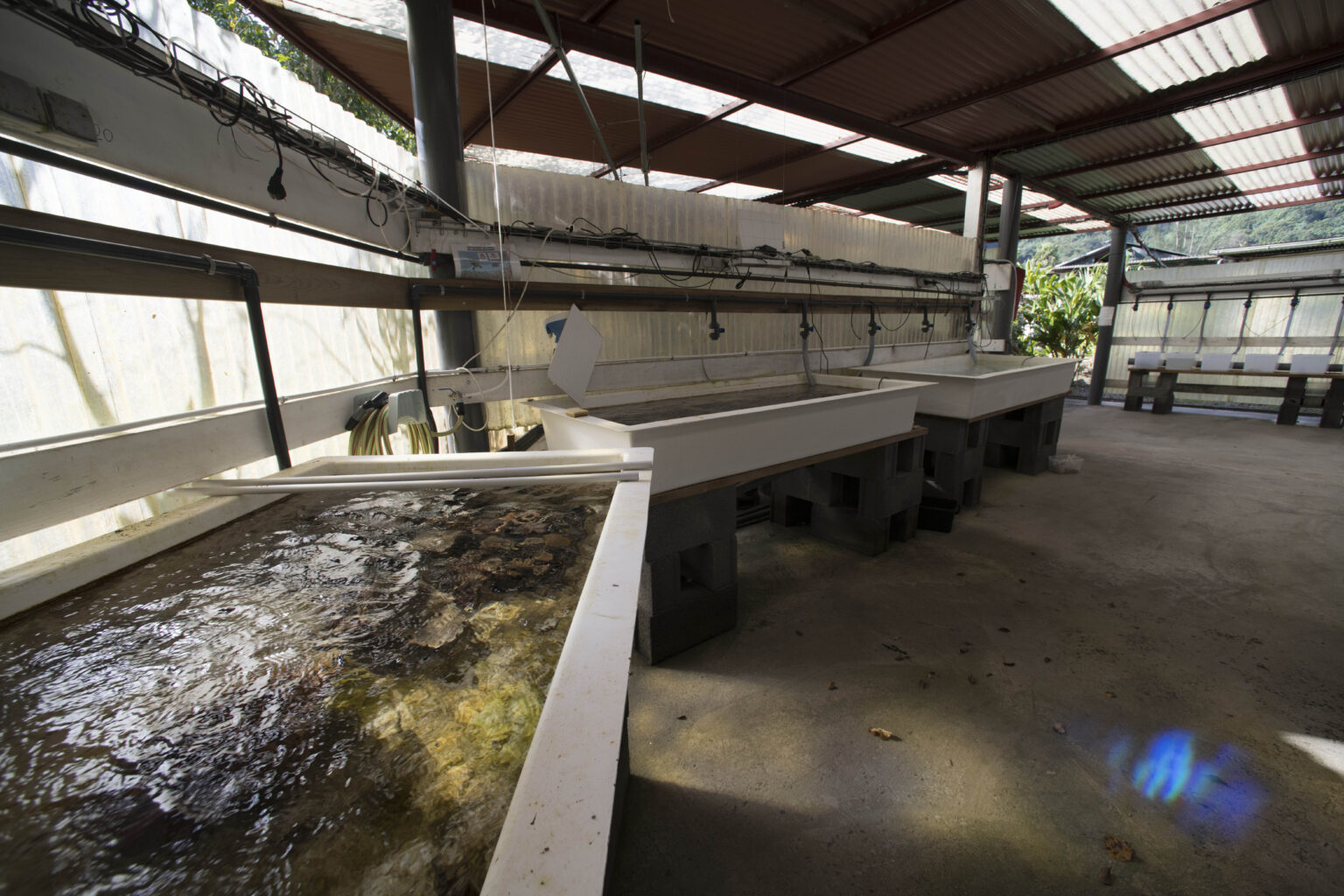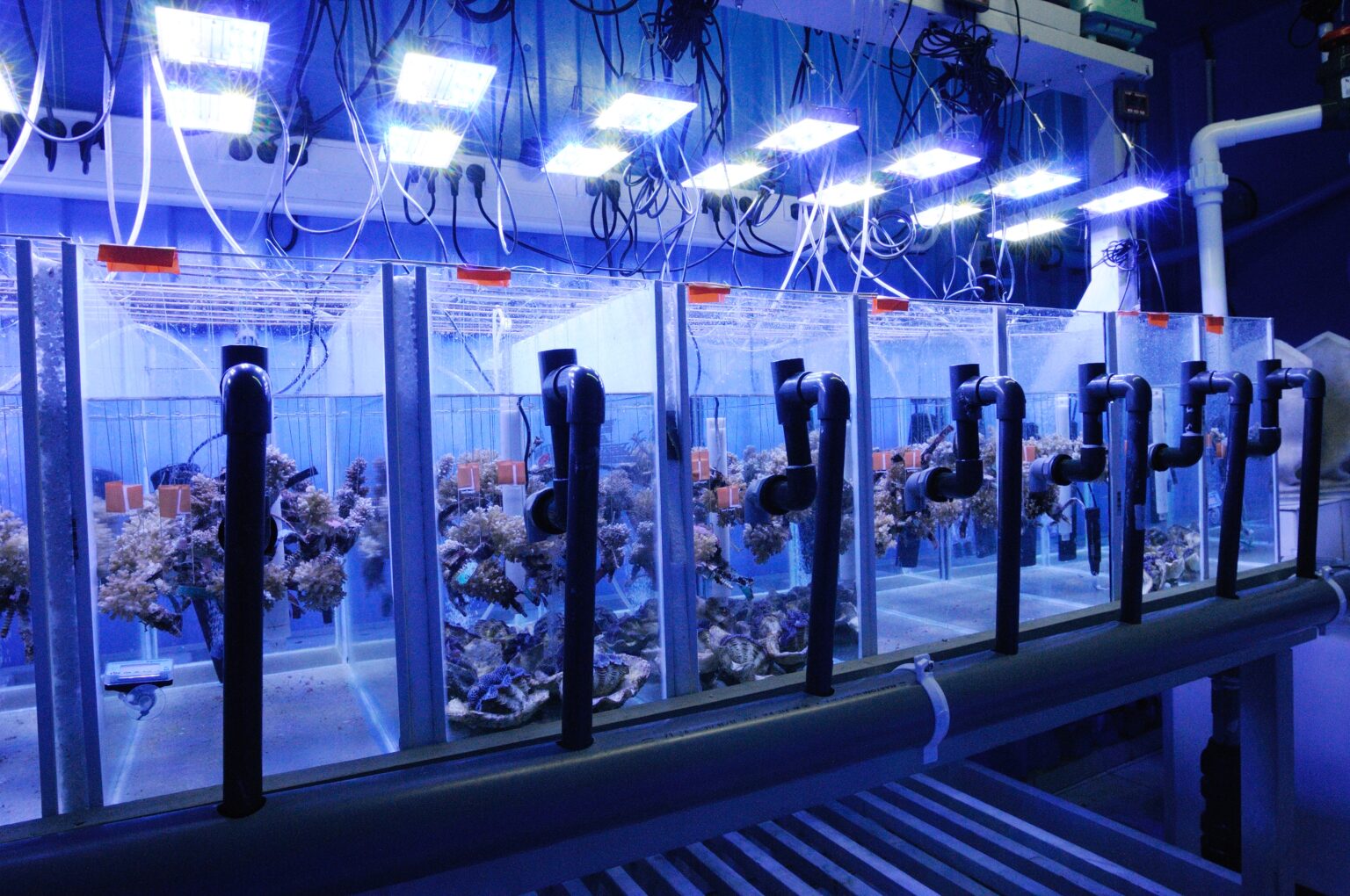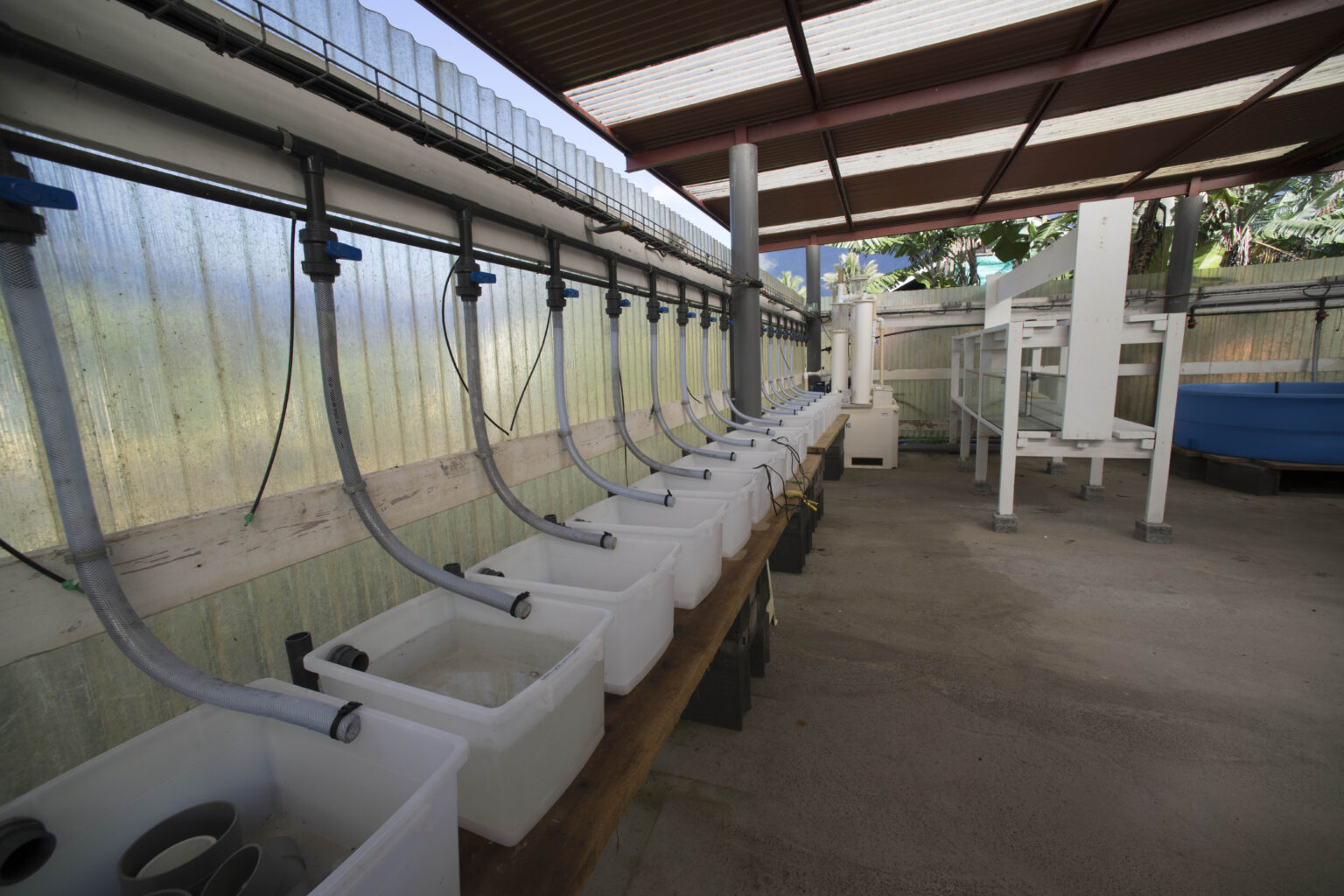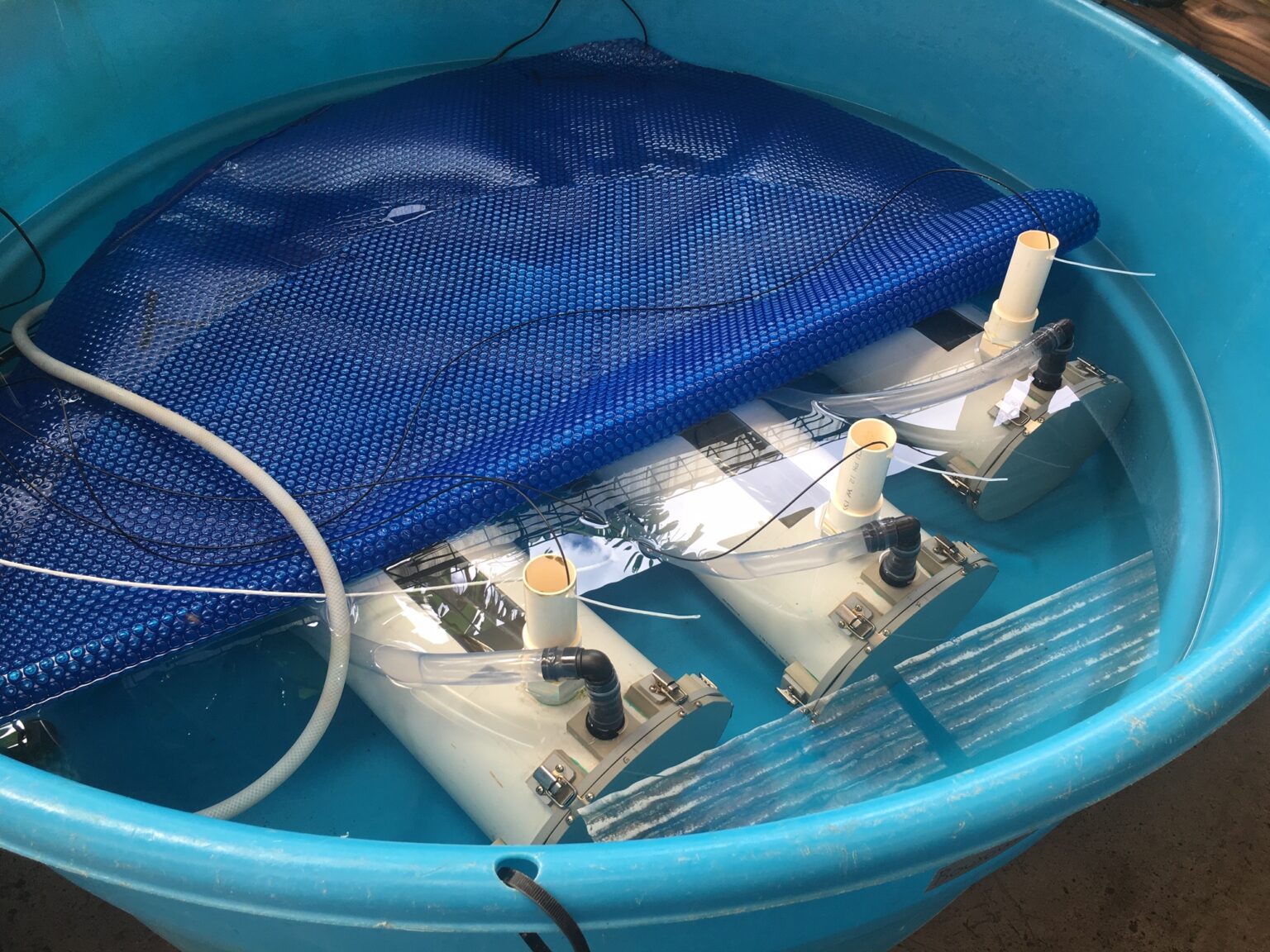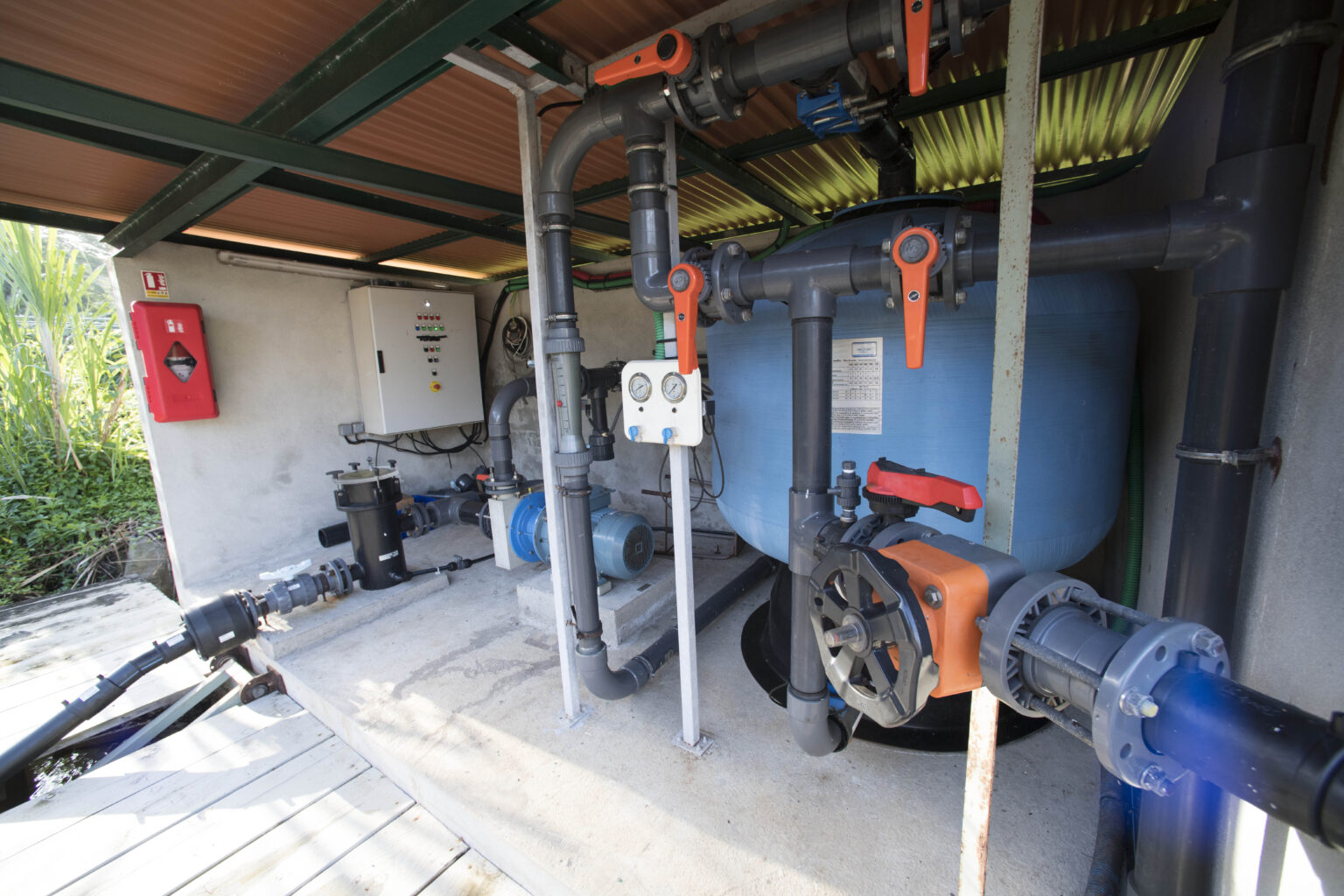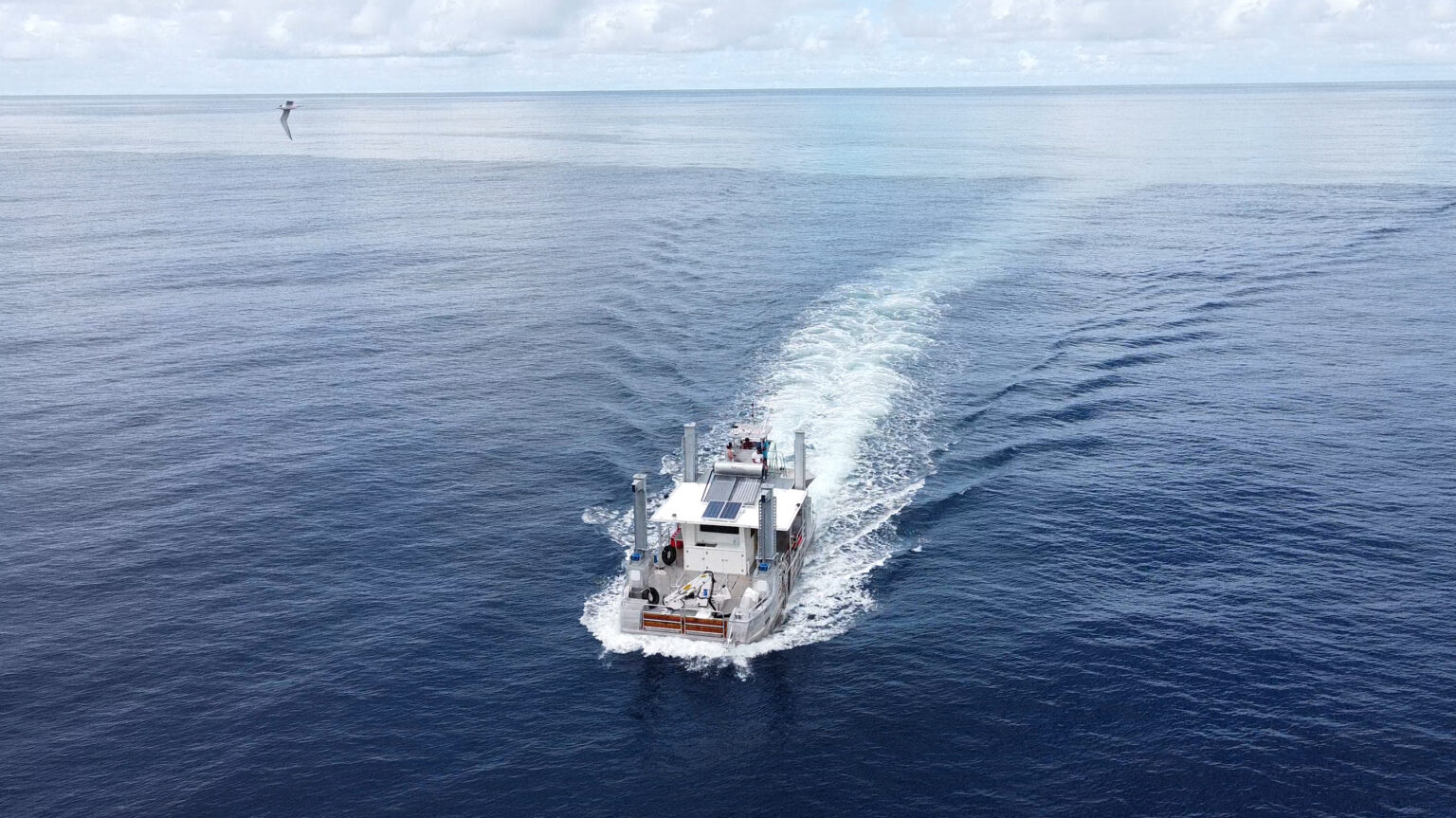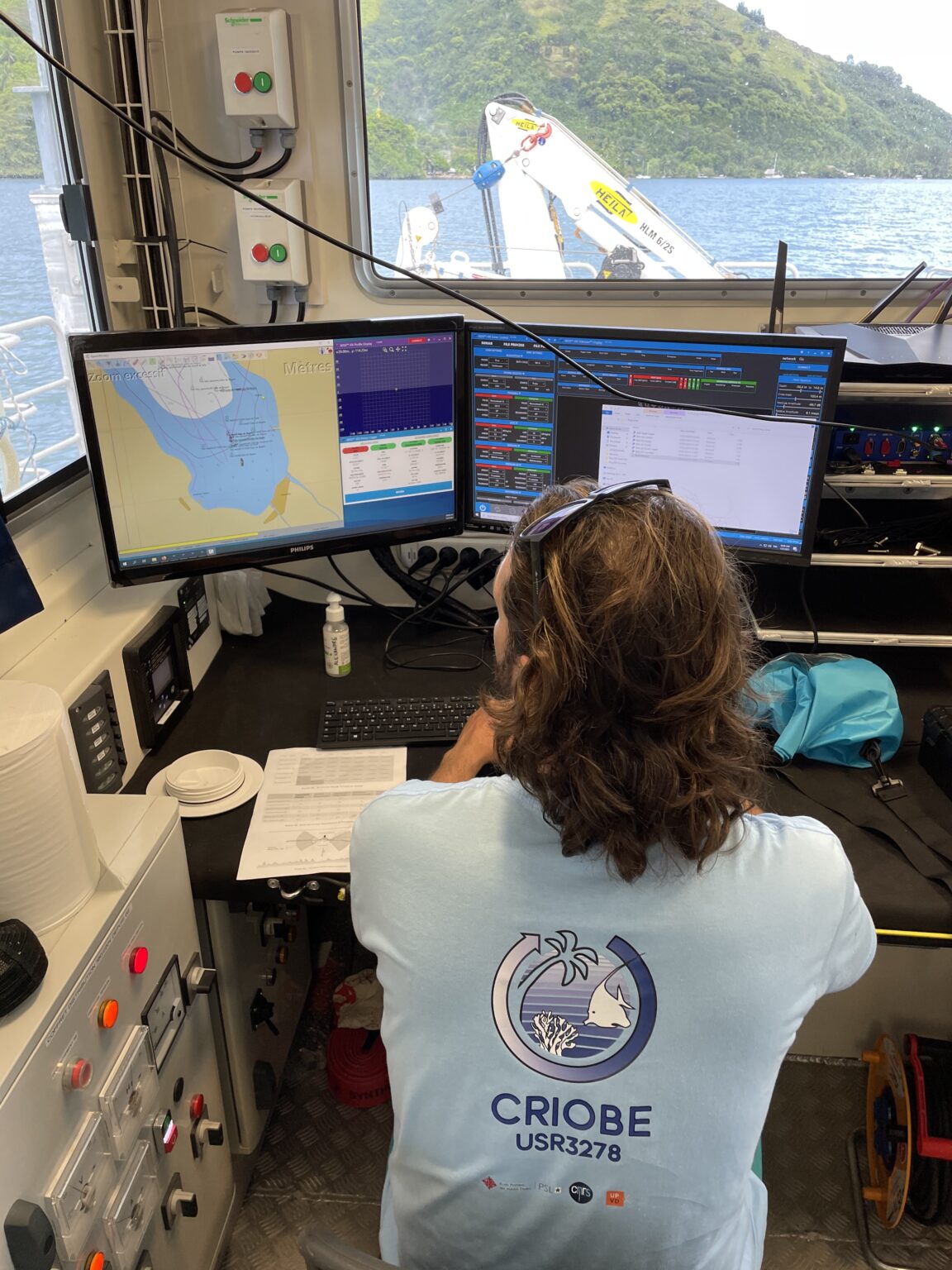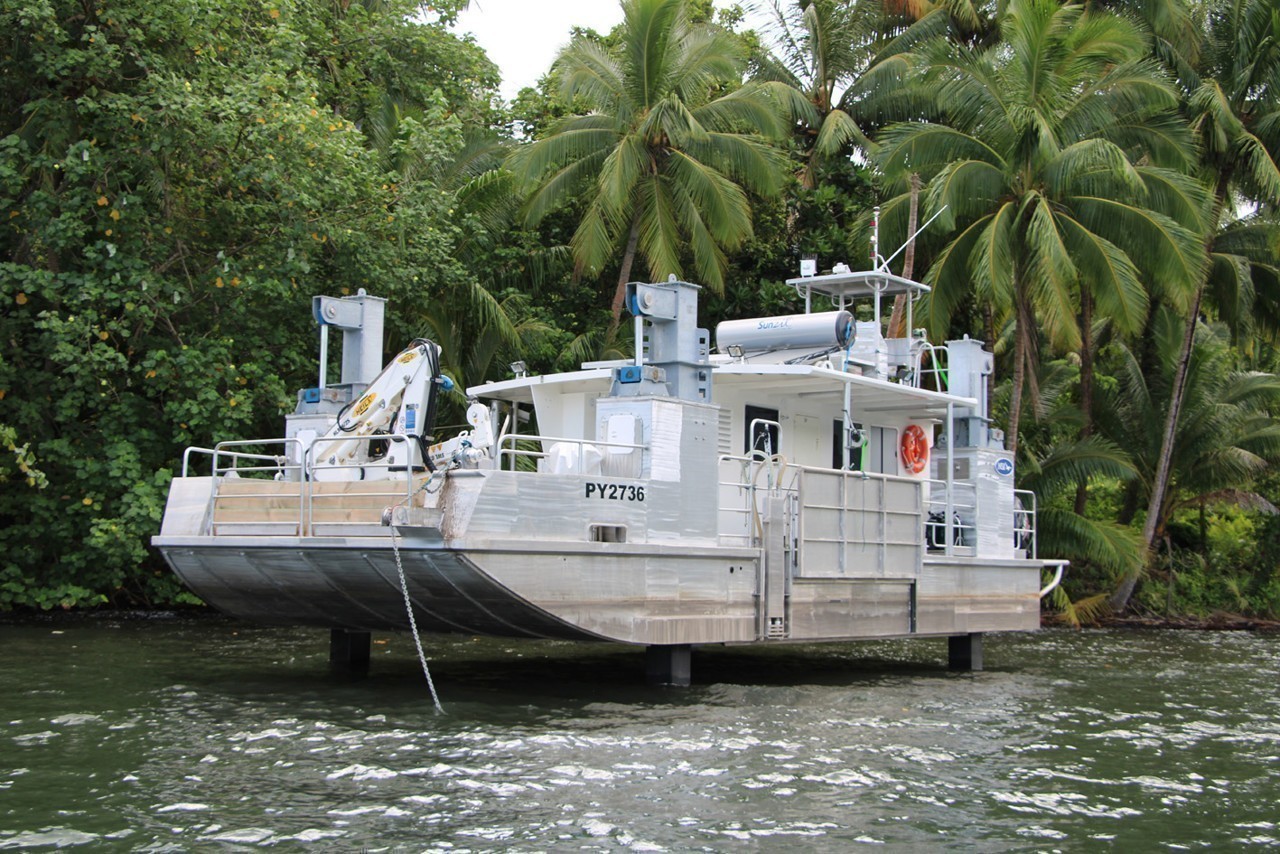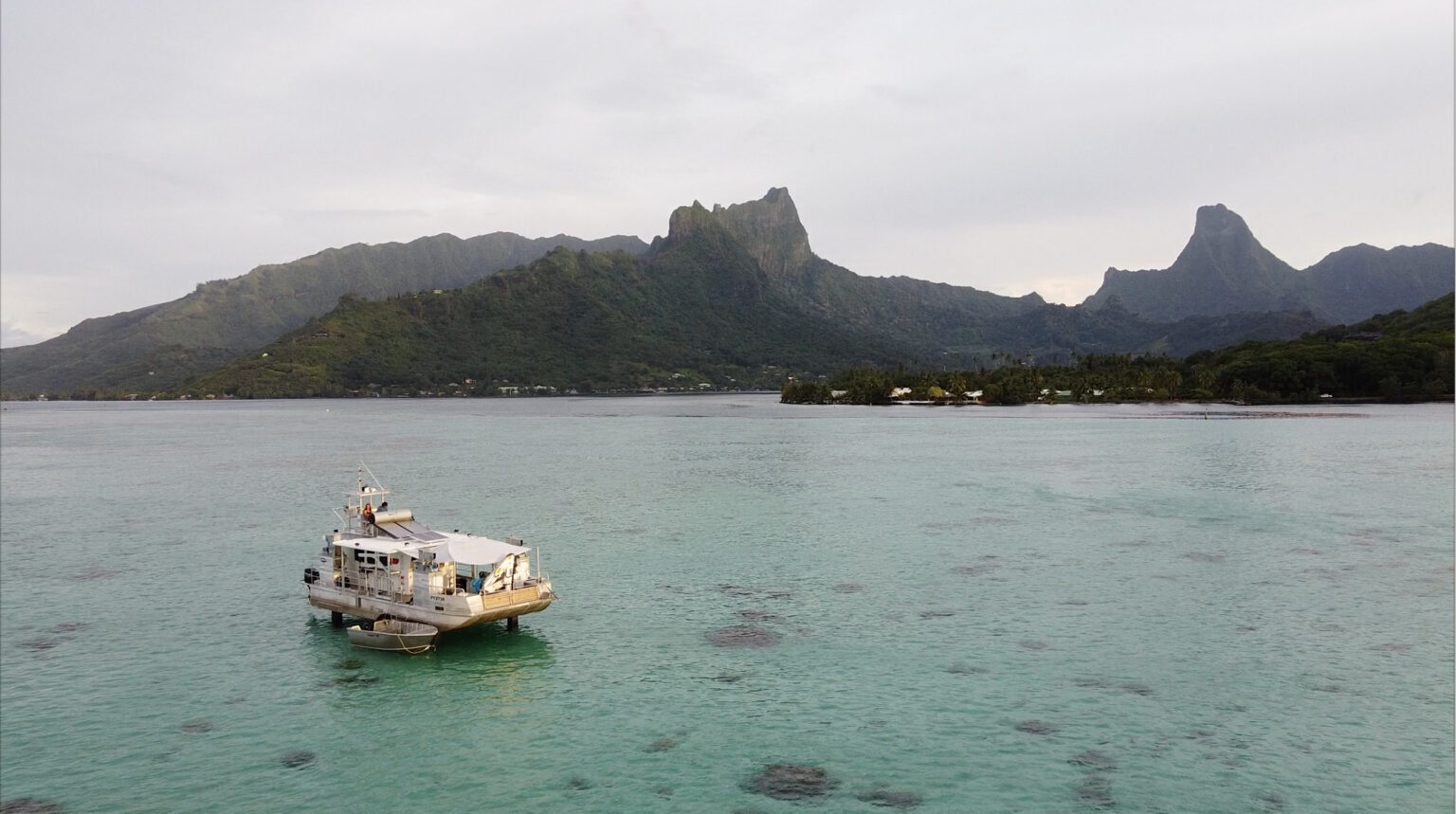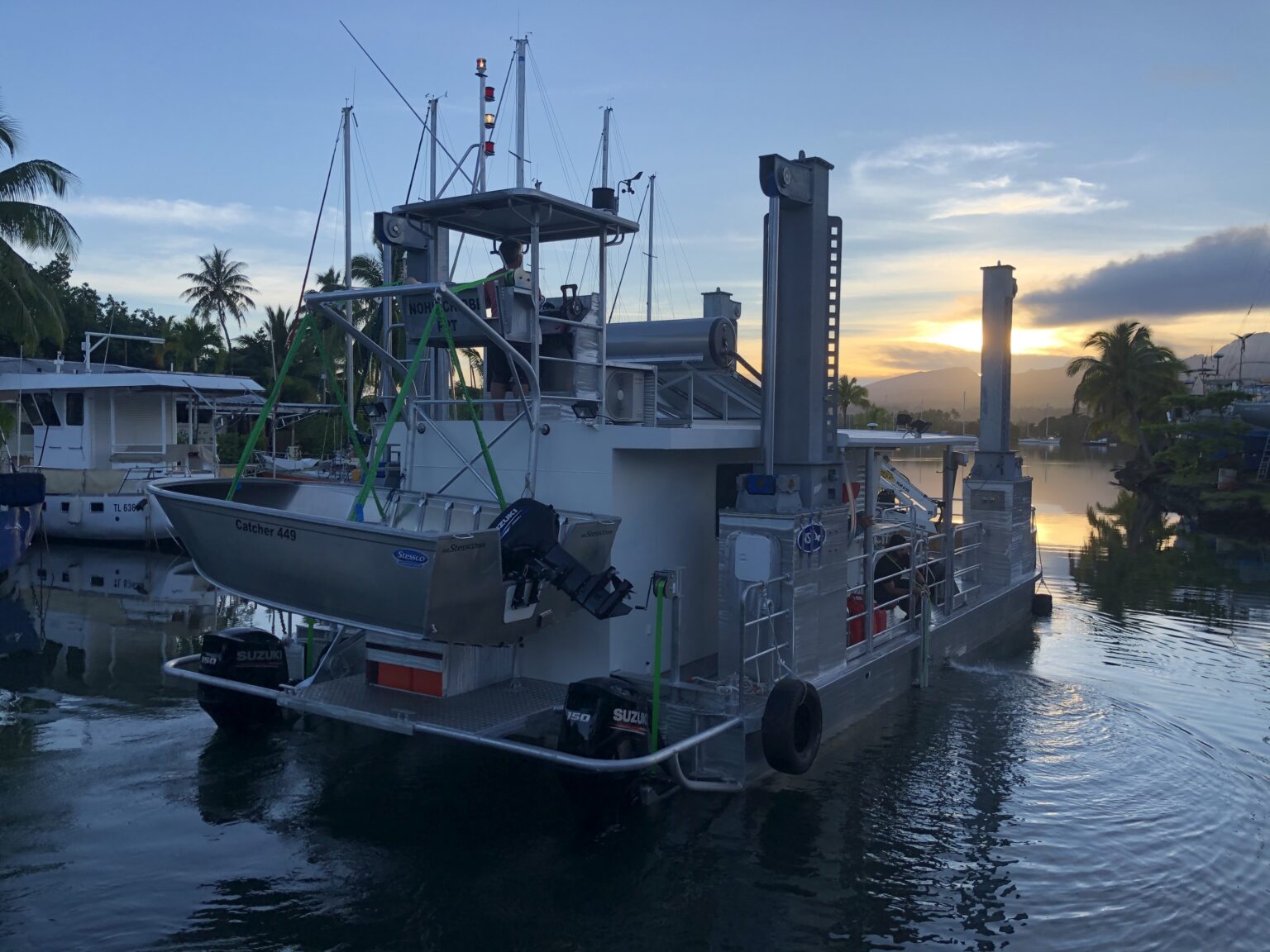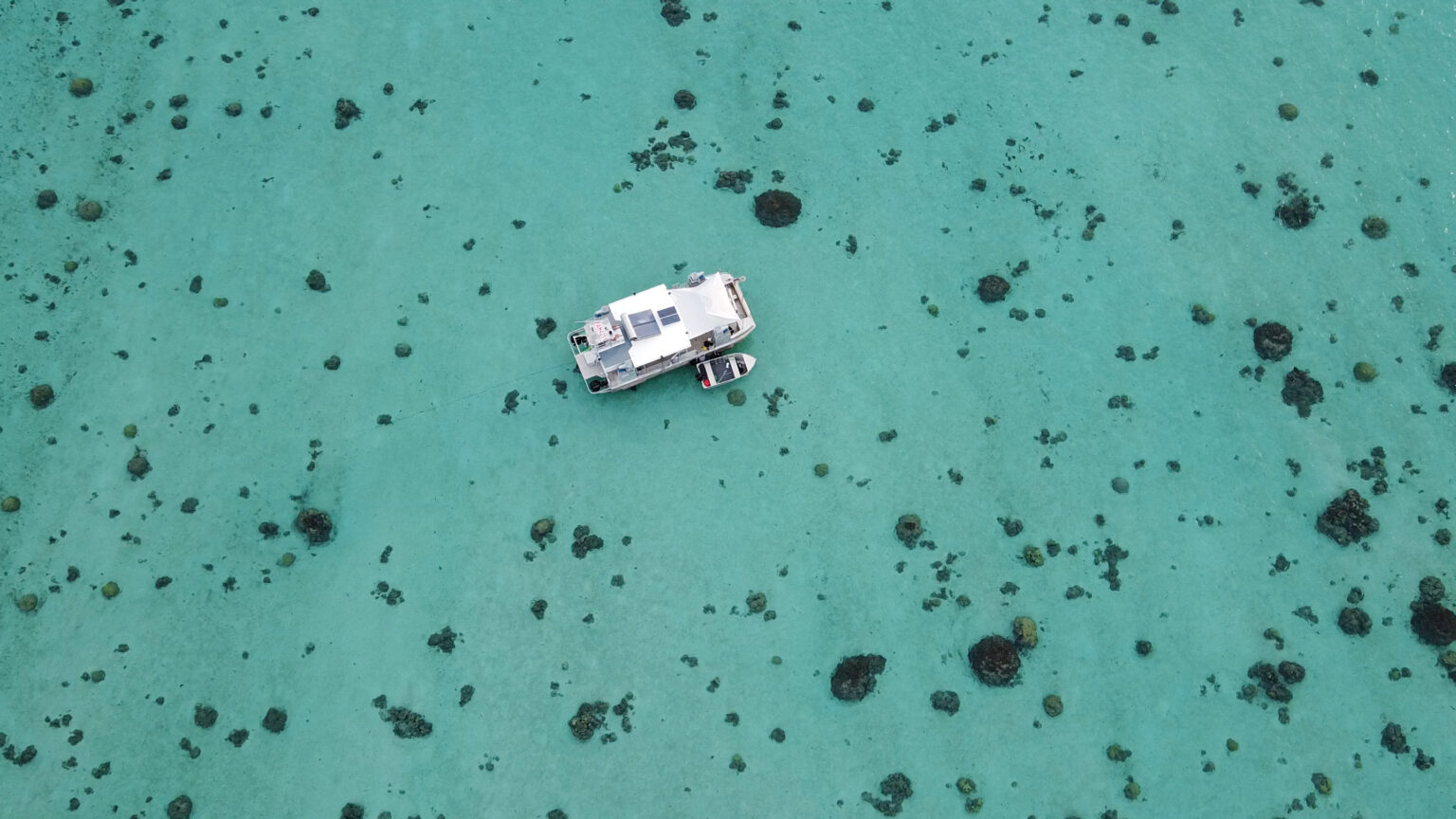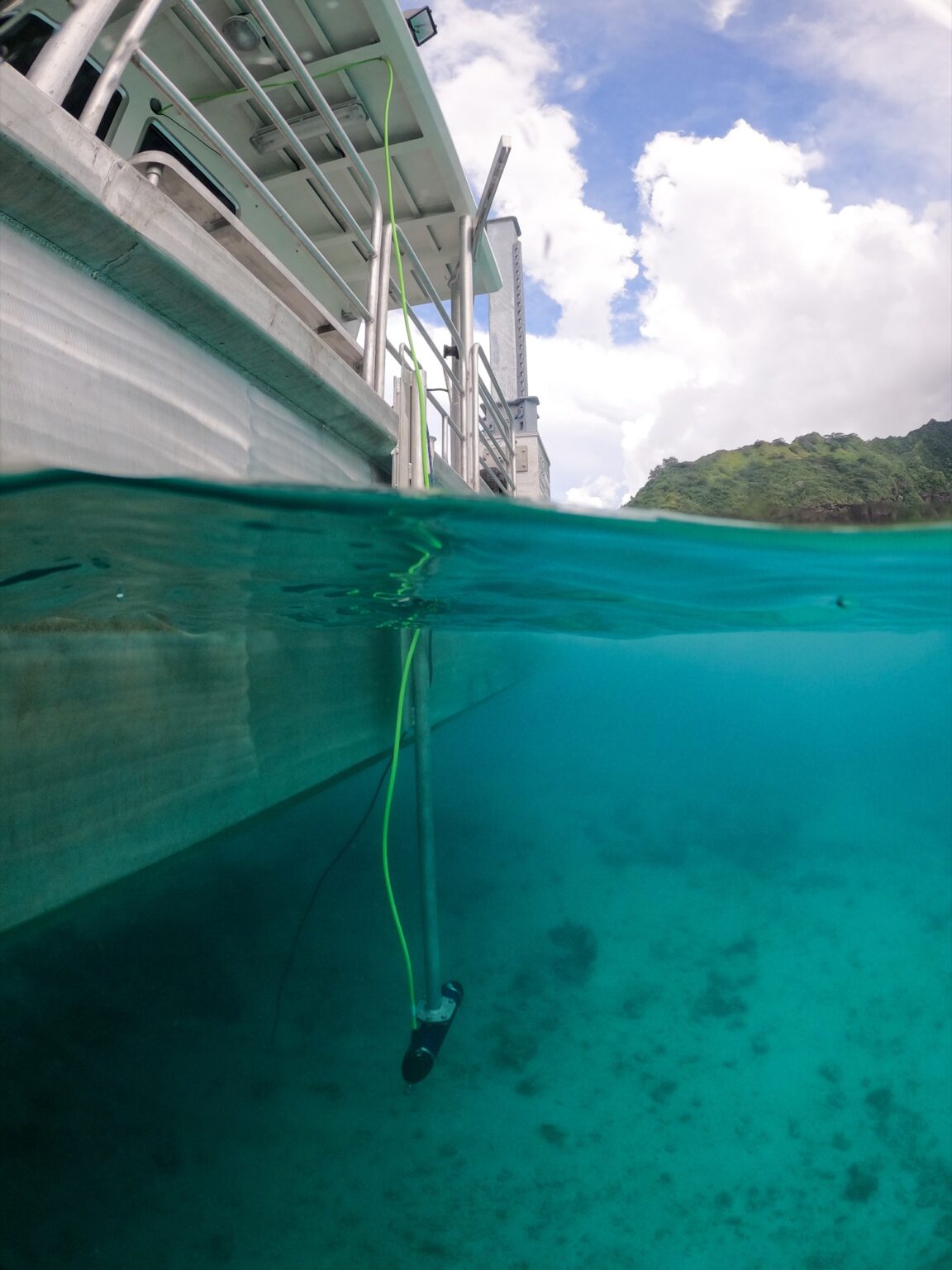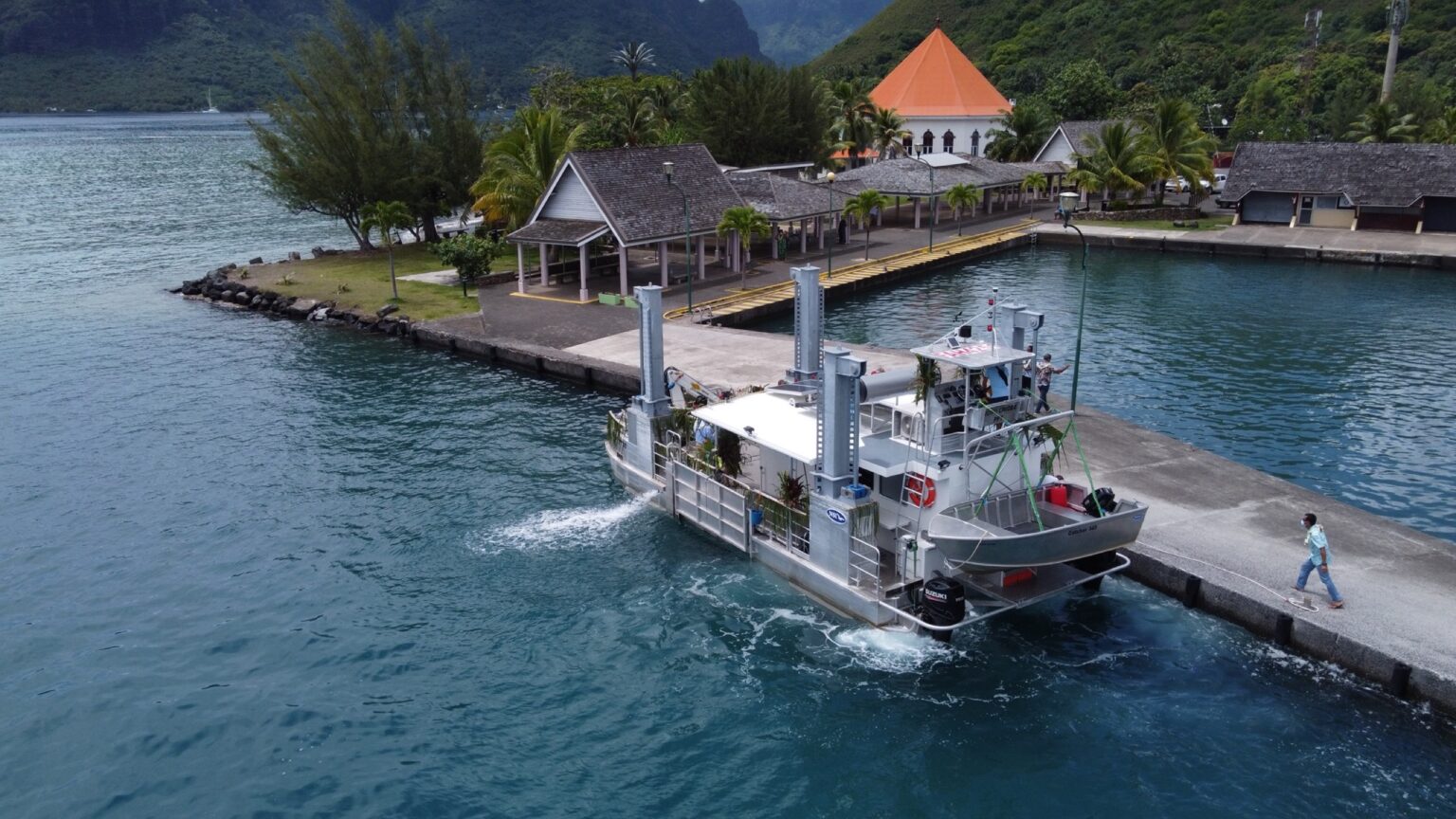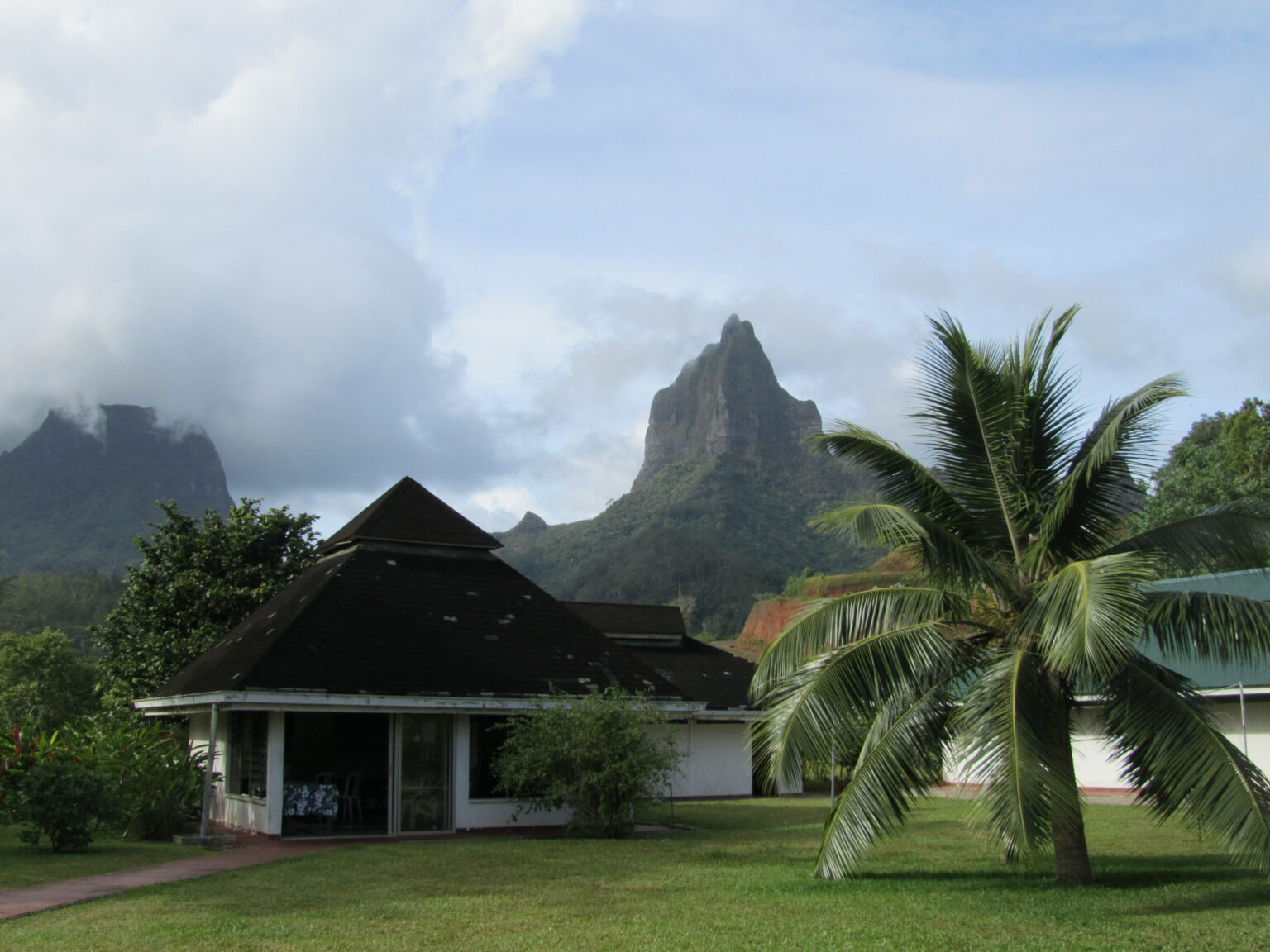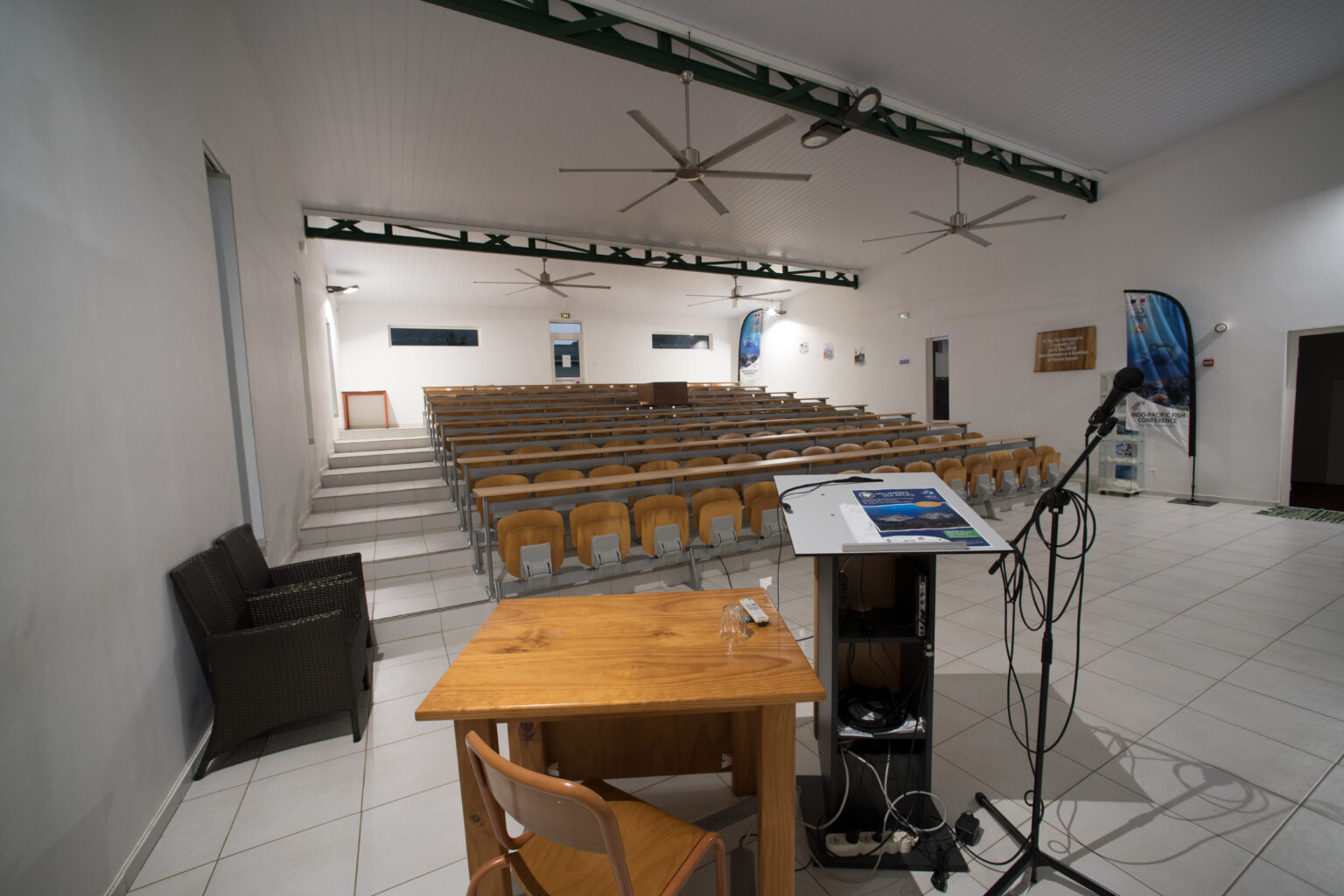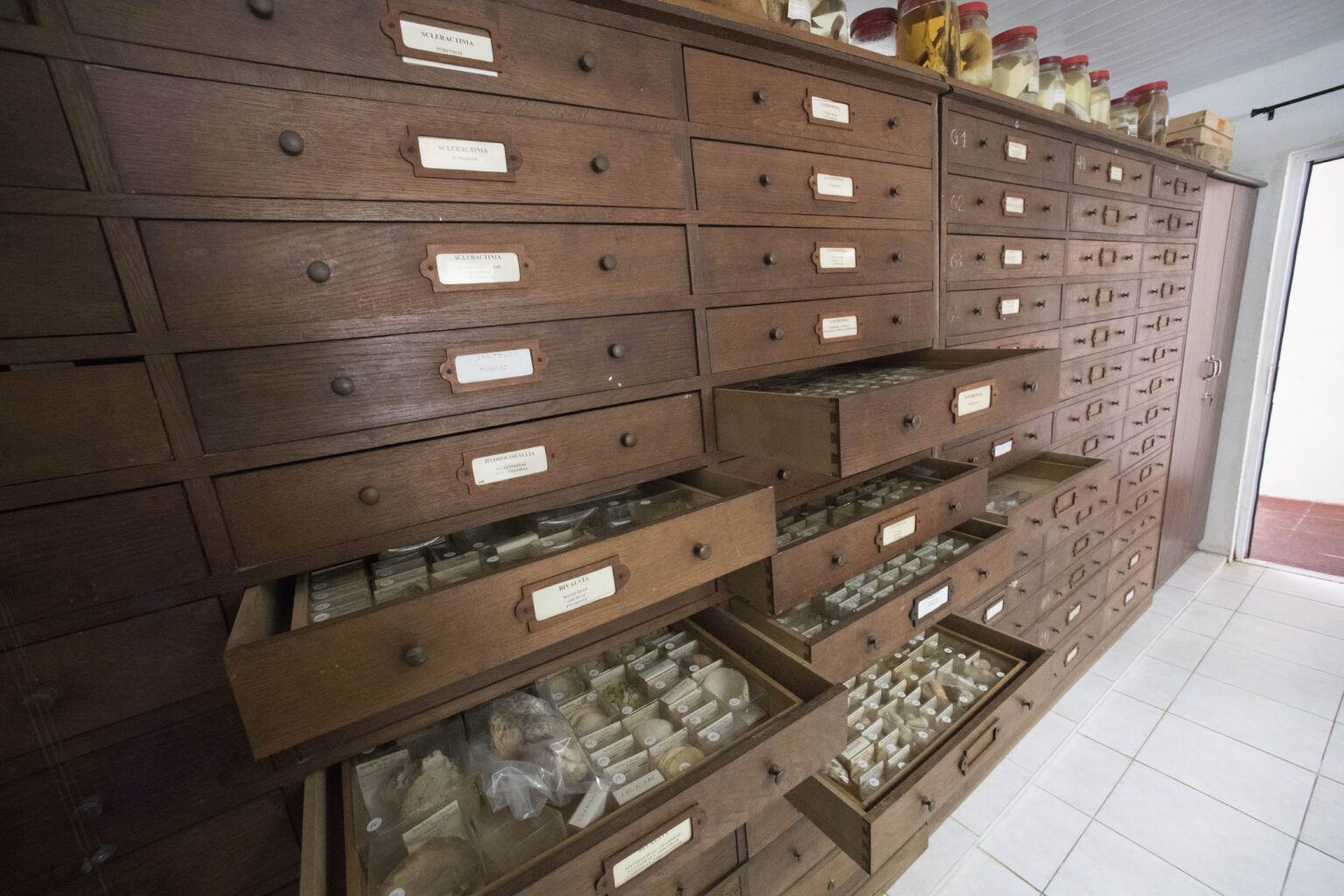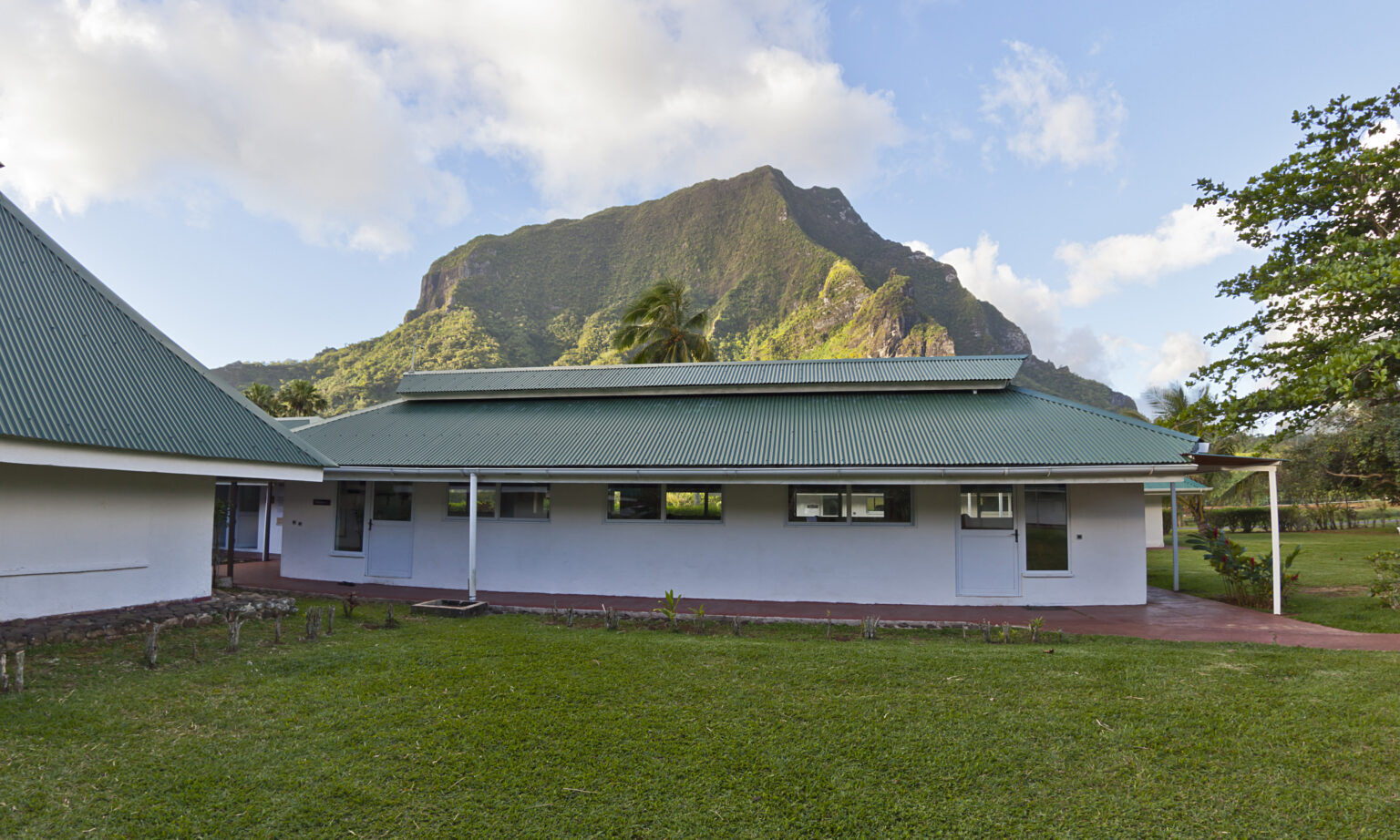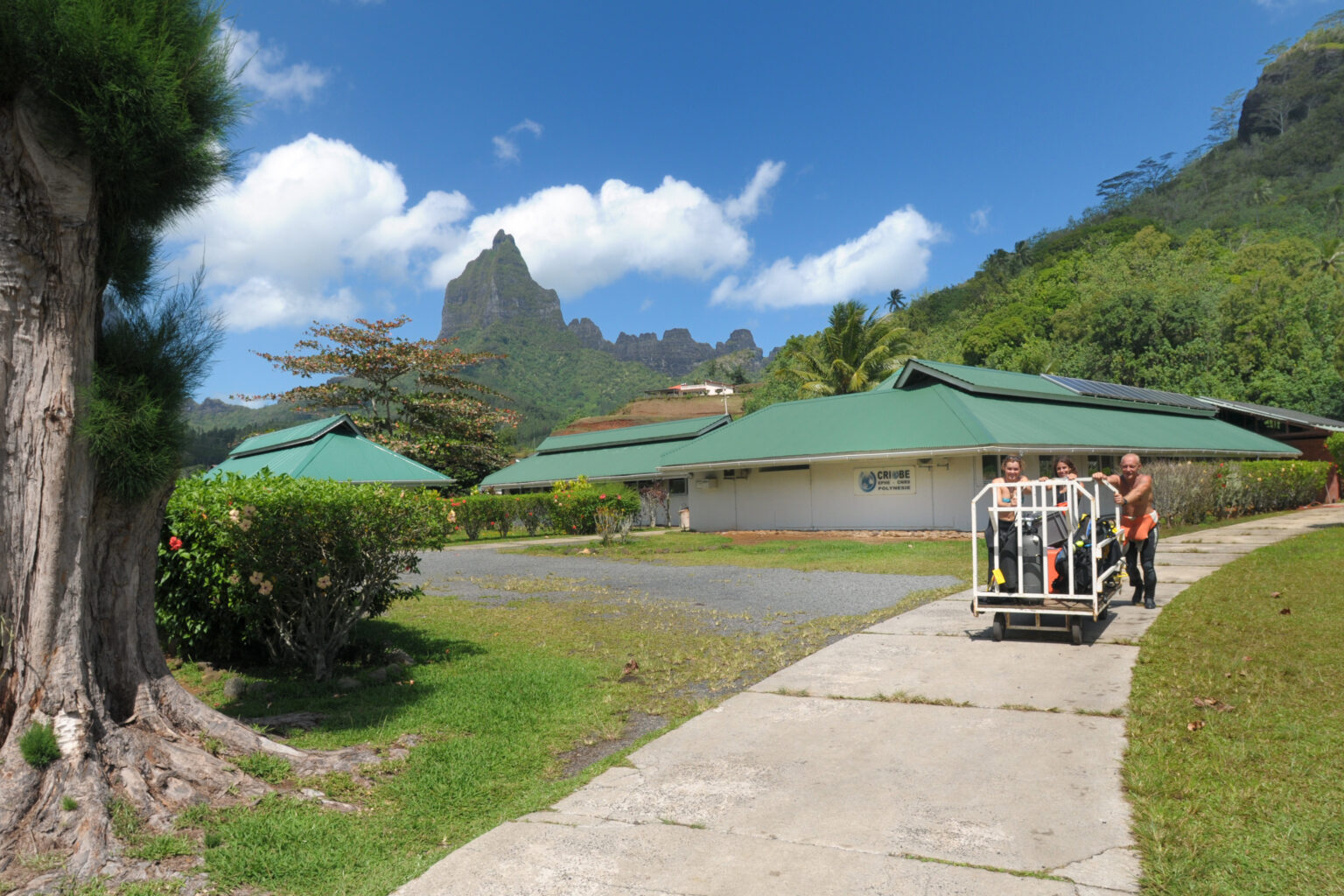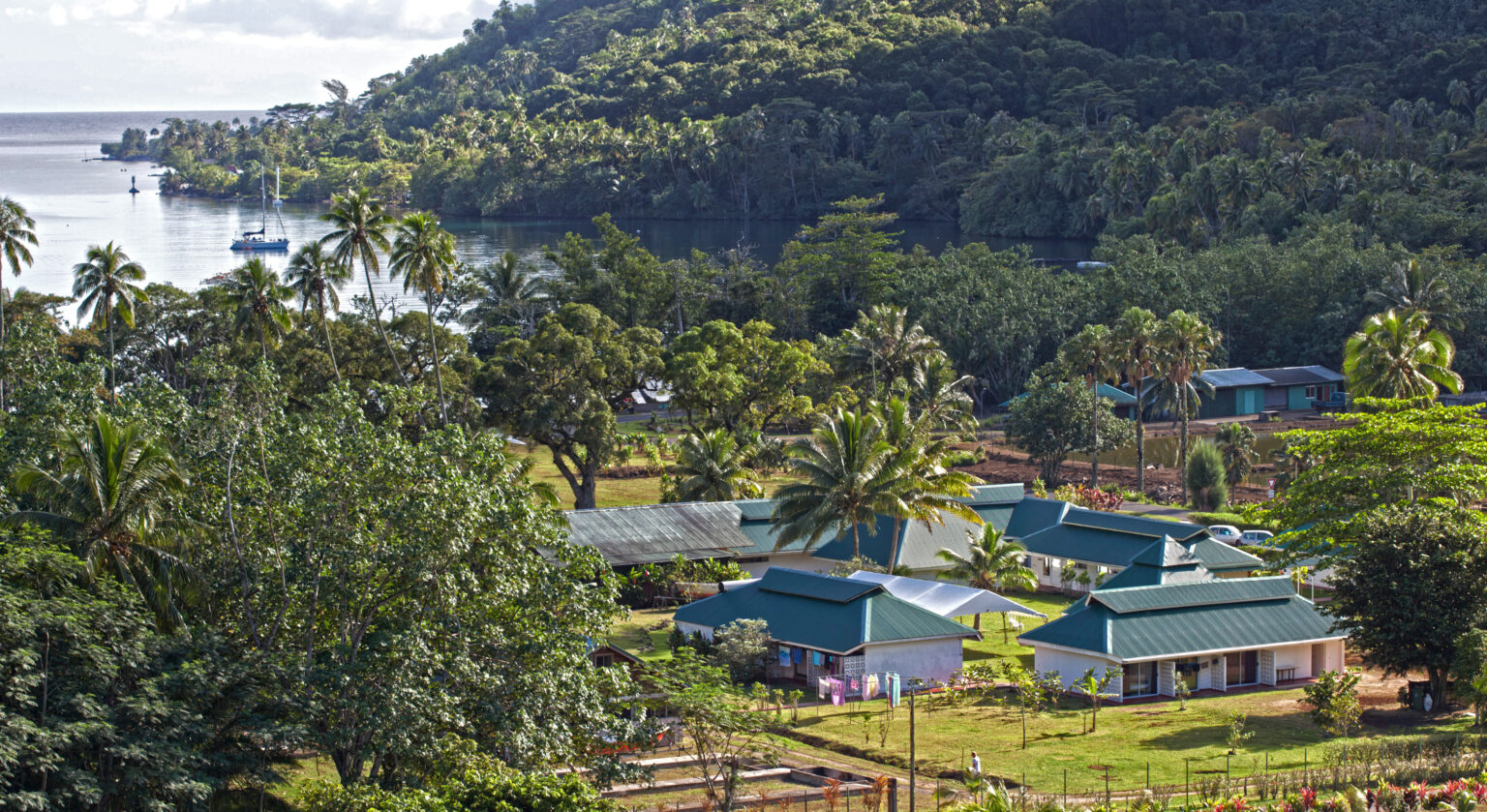Moorea’s International Research Station
Experimental Ecology Station

The Experimental Ecology Station (SEE) is the most recent of the 5 research stations in the CNRS-INEE RéNSEE network. It provides a number of facilities that enable in vivo and in situ experiments on coral ecosystems.
Our facilities enable researchers to control, among others, the variables linked to climate change in order to better understand the processes that govern the persistence of populations and biological communities as well as the mechanisms of resistance to climate stress.
Contact : station.criobe@services.cnrs.fr
- The station
- Facilities
- Equipments
- Barge
- Housing
In Moorea, French Polynesia, the SEE welcomes researchers and students from all over the world. With 20,500 m2 of land, including 2,410 m2 of built-up areas, this operational platform for field work on Polynesian reefs includes accommodations, offices, laboratories and technical labs. Whether you need access to Moorea for research, or to the CRIOBE Station’s labs, you will find our facilities equipped and welcoming.
- 3 molecular biology/physiology laboratory rooms: DNA extractions, PCR, migration on agarose gel, centrifuges, DNA gel migration kit (eGel Power Snap), Vortex, Qubit 4, Nanodrop (DNA quantification), Maxwell extraction robot, -80°C freezers, water baths and thermoblocks.
- Seawater chemistry laboratory: dosing of nutrient salts, alkalinometry titration. Equipped with an AA3-H3 autoanalyzer (nutrient salt dosage), Titrando 888 (seawater alkalinity titration), deionized water and milli-Q water fountain, chemical hood, benchtop probe (pH, temperature, conductivity, dissolved oxygen), Precision balance, muffle furnace.
- Optical laboratory / photography: observations under the microscope, or binocular magnifying glass. Photo via binocular magnifiers with integrated camera, Microscope with integrated camera, Epifluorescence microscope, Photo stand.
- Handling laboratory for wet material: dissections, weighing and measurements of marine organisms, seawater filtrations. Equipped with a formalin hood, filtration systems (for 25 and 47mm diameter filters), sieve
- Collection room with specimens of fish (321 species), marine molluscs (984 species), freshwater or terrestrial molluscs (12 species), crustaceans (98 species), hard corals (98 species), foraminifera (about 50 species) , algae (97 species), echinoderms (13 species)
- Aquarium spaces with open seawater distribution circuit and more than 50 access points:
- 6 closed aquarium rooms with open seawater circuit (including 4 with the possibility of controlled, closed circuits), equipped with linear benches and work surfaces.
- Outdoor aquarium space of 700 m2, mesocosm systems allowing the control of environmental parameters (salinity, lighting, temperature, pH, etc.). Various tanks and pools with a total capacity of 100 m3.
- Coral nursery that can be customized based on experiences. Coral trees.
- Respirometry equipment of various volumes
- Coming soon: recommissioning of a closed circuit system
- Air-conditioned office rooms equipped to accommodate up to 40 researchers and students
- Amphitheater with 130 seats;
- Library containing several thousand publications (reports, articles, books) on coral reefs. This room can accommodate up to 30 people for conferences, classes, and meetings. It is equipped with a screen, whiteboard, and projection equipment;
- Meeting rooms;
- Workshop with manual and electro-portable tools;
- Diving center with compressors from 8 to 12 m3/h and 30 diving blocks from 9 to 15l, individual ballast, open drying and storage room, safety equipment;
- Storage and storage rooms
All buildings are equipped with a wired Internet network and WiFi is available throughout the station.
Fieldwork equipment
- High-resolution digital cameras for terrestrial and underwater photography and videography
- GPS, depth sounder, portable multi-parameter probe (pH, temperature, salinity, dissolved oxygen), thermographs.
- Underwater drills, lifting parachutes, diving weights, electric fishing equipment.
- Generator, portable compressor, water pumps.
- Portable diving compressors.
Various laboratory equipment (see specific equipment in the “Facilities” tab)
- Centrifuges: refrigerated or not, for 50mL tubes and eppendorf tubes
- Sieve shaker and its sieve tray (500, 250,125 and 63µm)
- Freeze dryer
- Chemical hood, PCR hood
- Ovens
- Muffle furnace
- Thermocycler
- Laboratory dryer
- Laboratory glassware
- Sea water filtration units and vacuum pump
- Producer of deionized water and ultra pure water (mill-Q)
- Tissue grinder
- Binocular microscopes and loupes
- Kaiser photo stand
- Refrigerators and freezers (-20°C, -40°C, and -80°C)
Miscellaneous
- Color laser printer, scanner, photocopier
- Welding machine
- High-speed Internet
This platform consists of a modified barge that can be temporarily placed within a coral reef and deployed as part of a project requiring on-site experimentation.

This barge, called NOHU-CRIOBE in reference to the name of the bay of ‘Opunohu – its anchor point, revolves around four elements:
- a network of in situ sensors with continuous recording sensors, broadcasted on the internet in real time,
- a network of in situ cameras in real time for the observation of specific behaviors (rare, unpredictable, nocturnal),
- a nursery of corals and other model organisms (clams, clownfish, etc.),
- In situ controlled environment greenhouses to directly simulate changes in the environment.
This innovative tool serves as a remote CRIOBE laboratory and has the ability to rise above the water in order to allow the laboratory not to be impacted by the swell. It has an operational autonomy of almost 3 months and can accommodate 2 staff members 24/7, and has a maximum capacity of 10 people during the day. The platform can also be transported in a container in a ship to be transported to different islands and atolls, thus ensuring a flexible and adaptable system for all the coral reefs of French Polynesia.
Technical characteristics of the barge
- Hull length: 11.95 m
- Overall width: 5.7m
- Light hull draft: 0.3 m
- Propulsion power: 2 x 150hp 4-stroke
- Transmission: Outboard
- Navigation category: 5th pro
- Load capacity: 24.8 Tons
- Fuel tank capacity: 2 x 100l
- GO capacity: 200l
- 1 VHS, 1 GPS, 1 compass
- 1 hydraulic unit
- 1 hoisting crane 1T
- 1 winch with a capacity of 2,500 kg at a reach of 1m
- 4 retractable legs
- 4 hydraulic cylinders
- 1 dinghy
- 1 cabin with 2 berths
- 2 air conditioners
- 2 sea water pumps: 10m3/h
- 4 electrical networks on board: 12v / 24v / 220v / 380v
- 1 refrigerator
- 1 freezer
- 2 stoves
- 8 short 12l diving tanks
- 1 compressor
- 1 supercharger
- 1 generator
- 1 launching hole
- 1 launching platform: 3m x 1.2m
- 1 lifting jib
- 1 solar water heater: 300l
- 2 experimental bells
- 1 remotely operated underwater vehicle (ROV)
- 1 multi-beam sonar
- Wet and dry benches
Accomodation facilities include:
- Double or triple rooms and a dormitory: total capacity of 31 beds
- Kitchens
- Laundry room
- Rest rooms – refectories
- Open coffee areas
